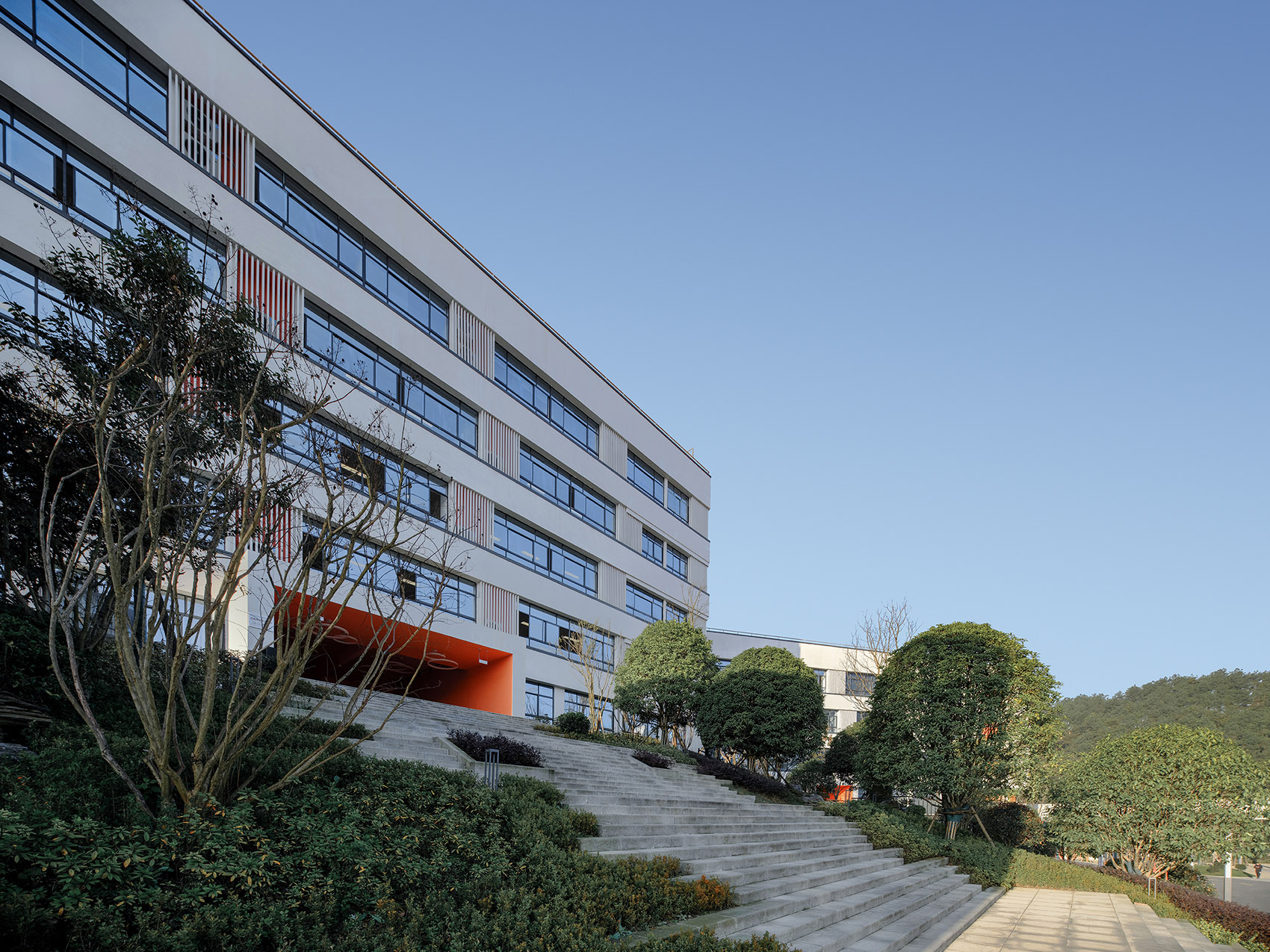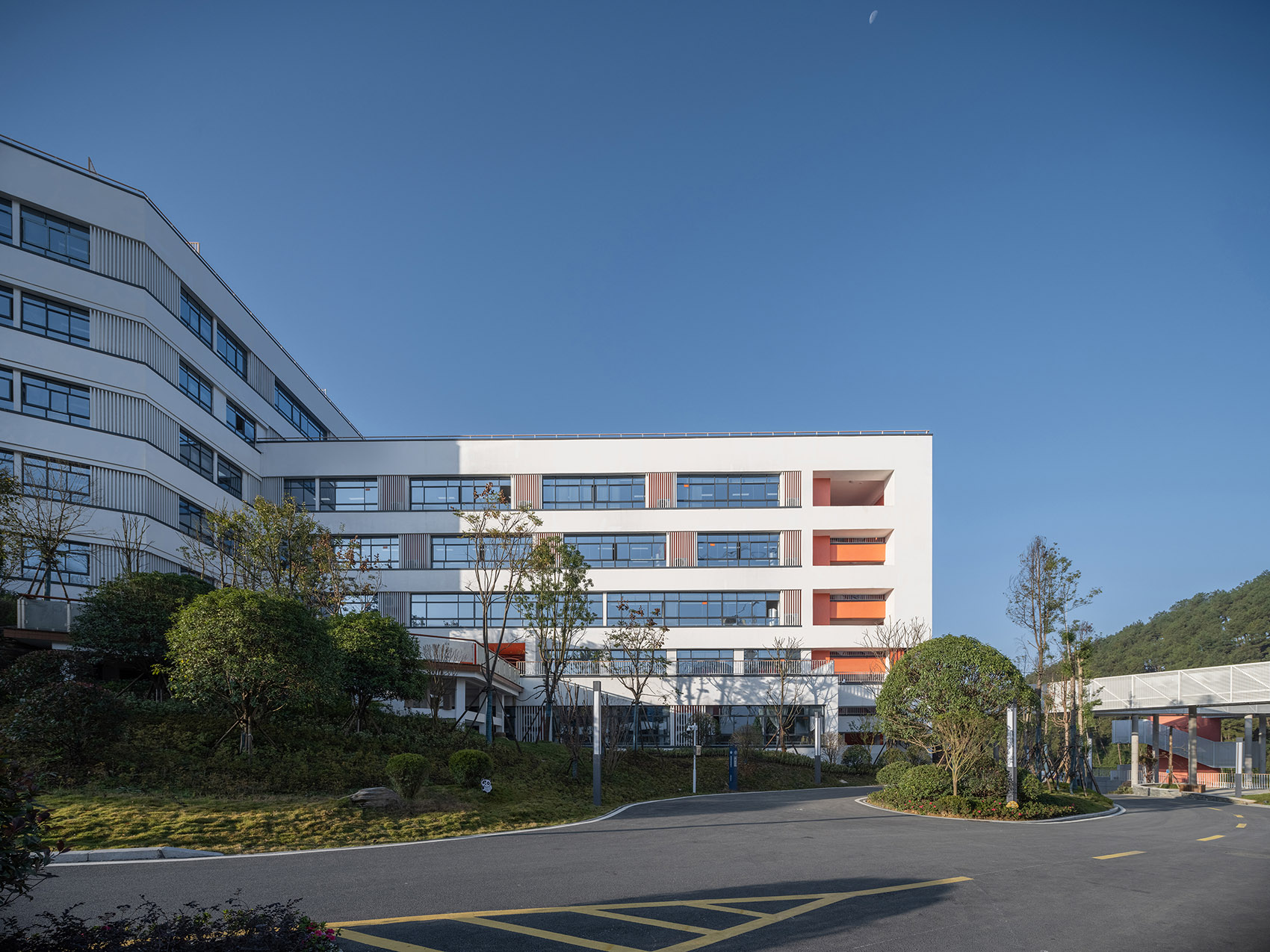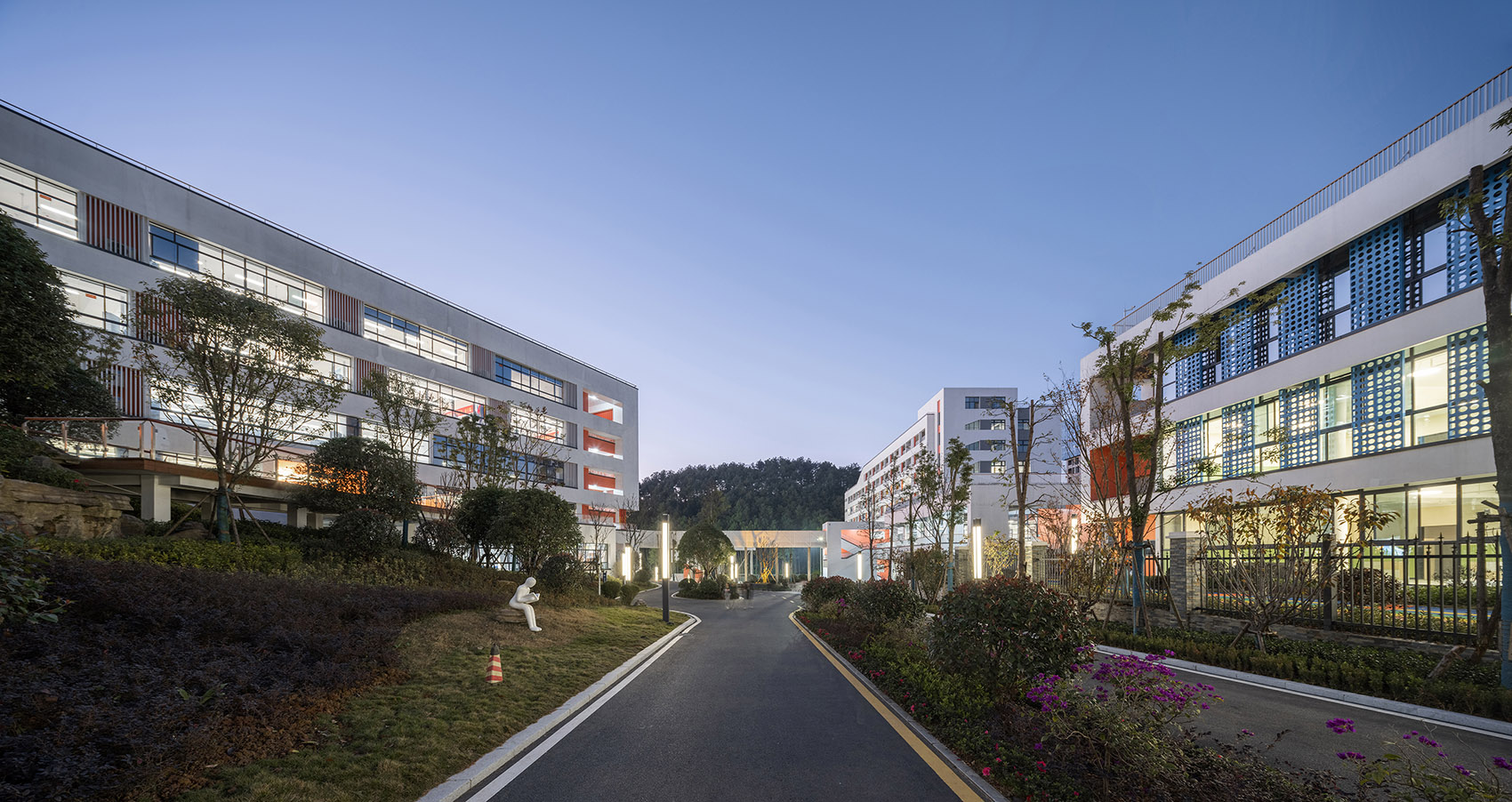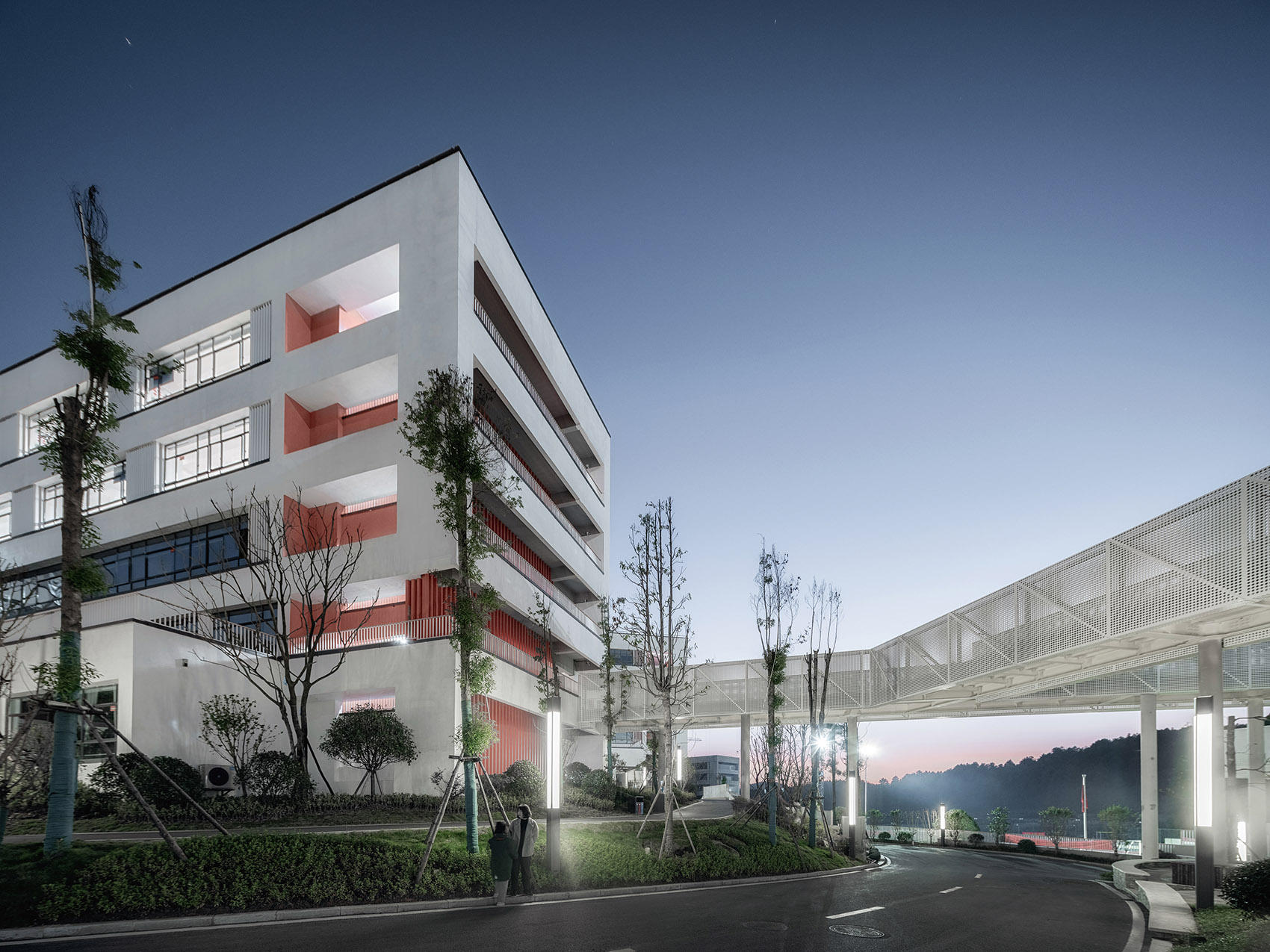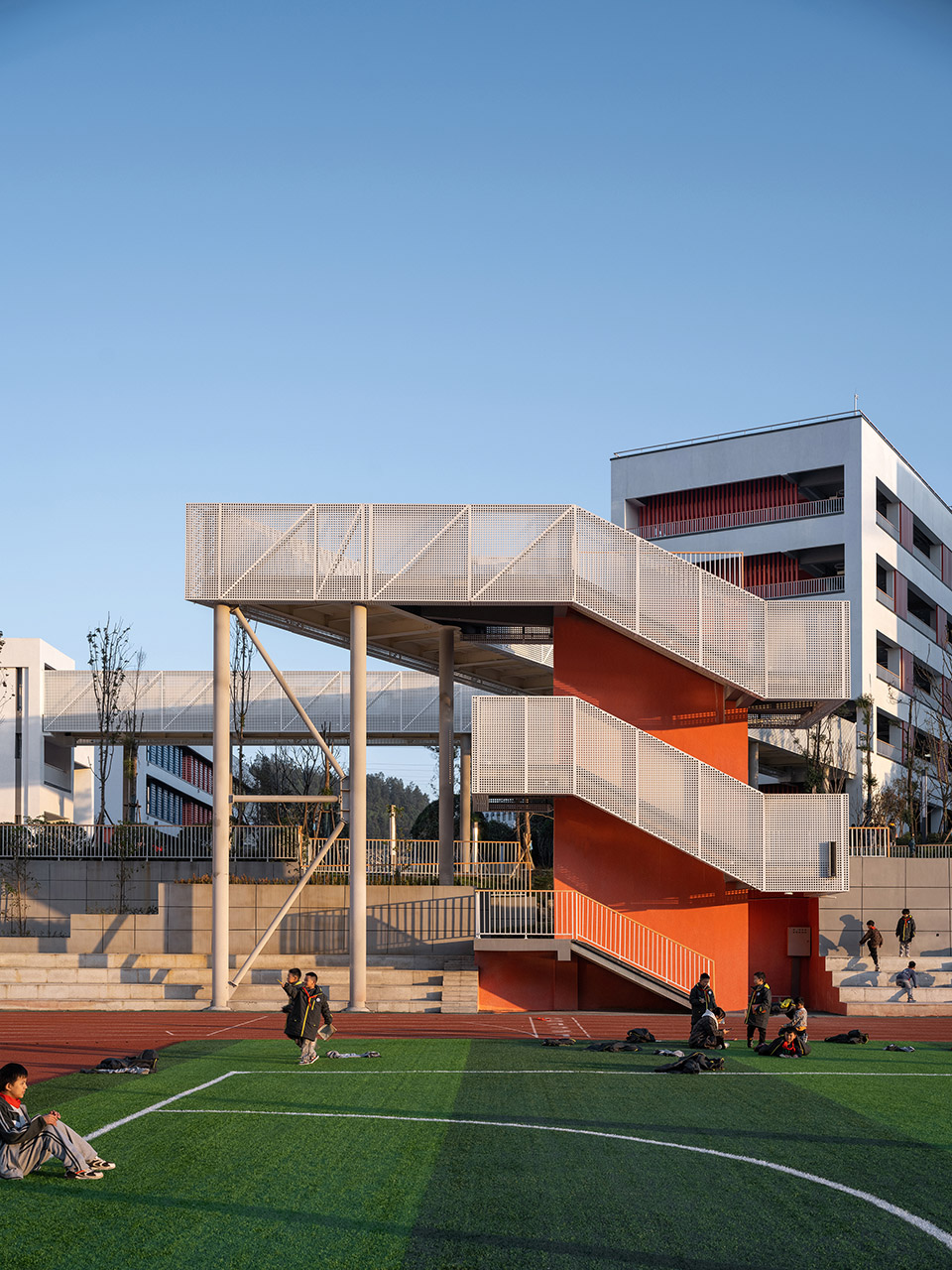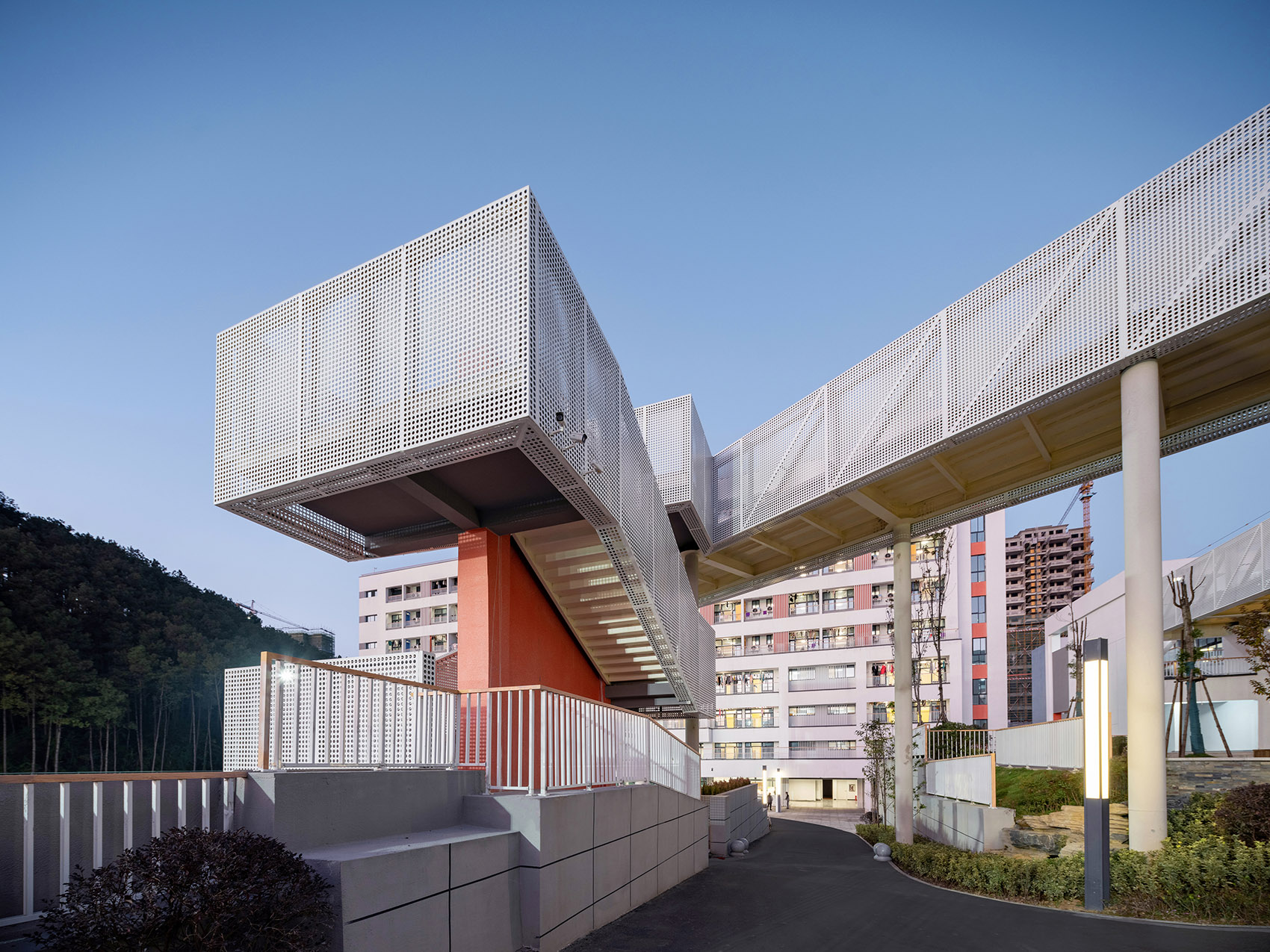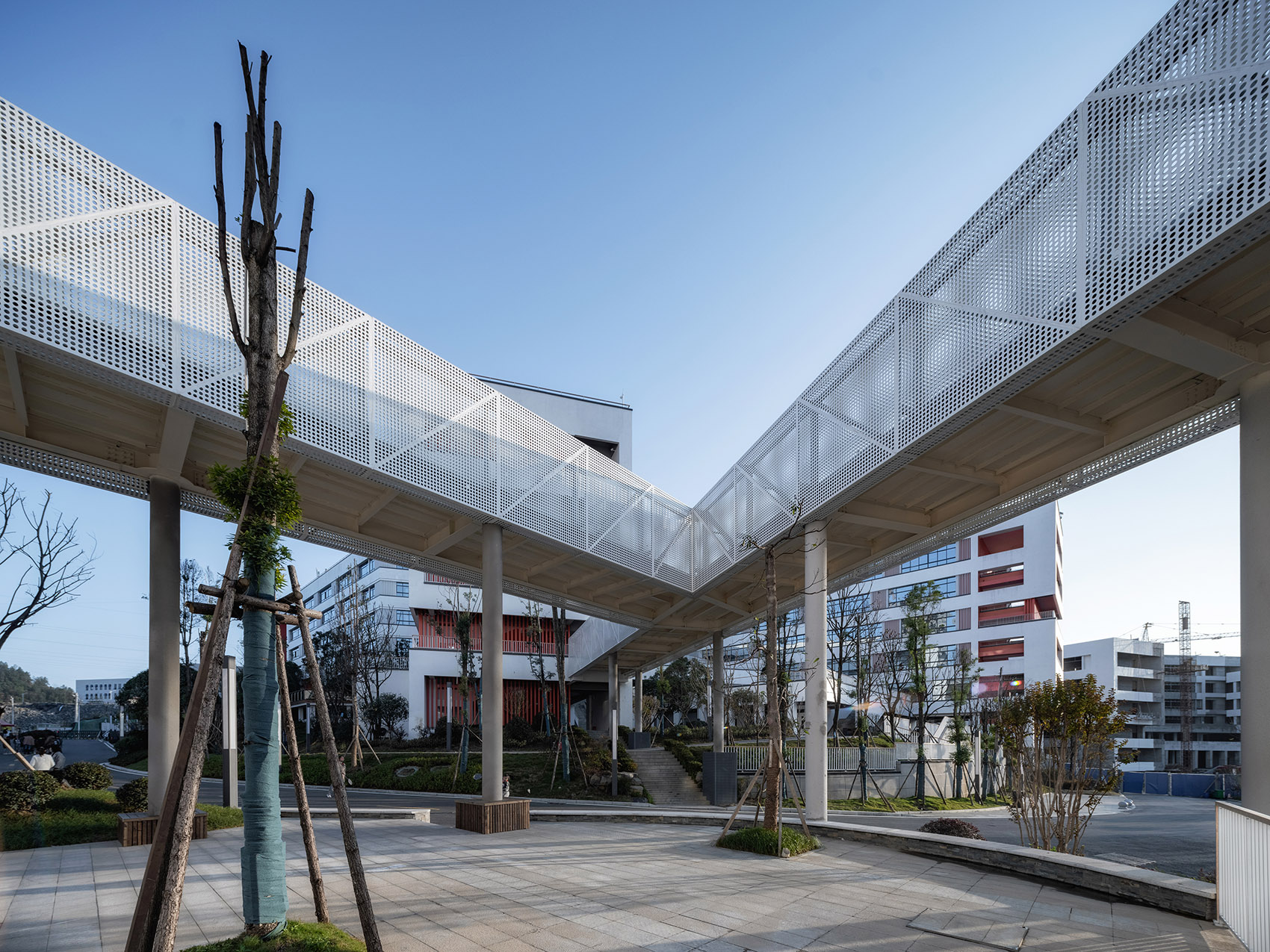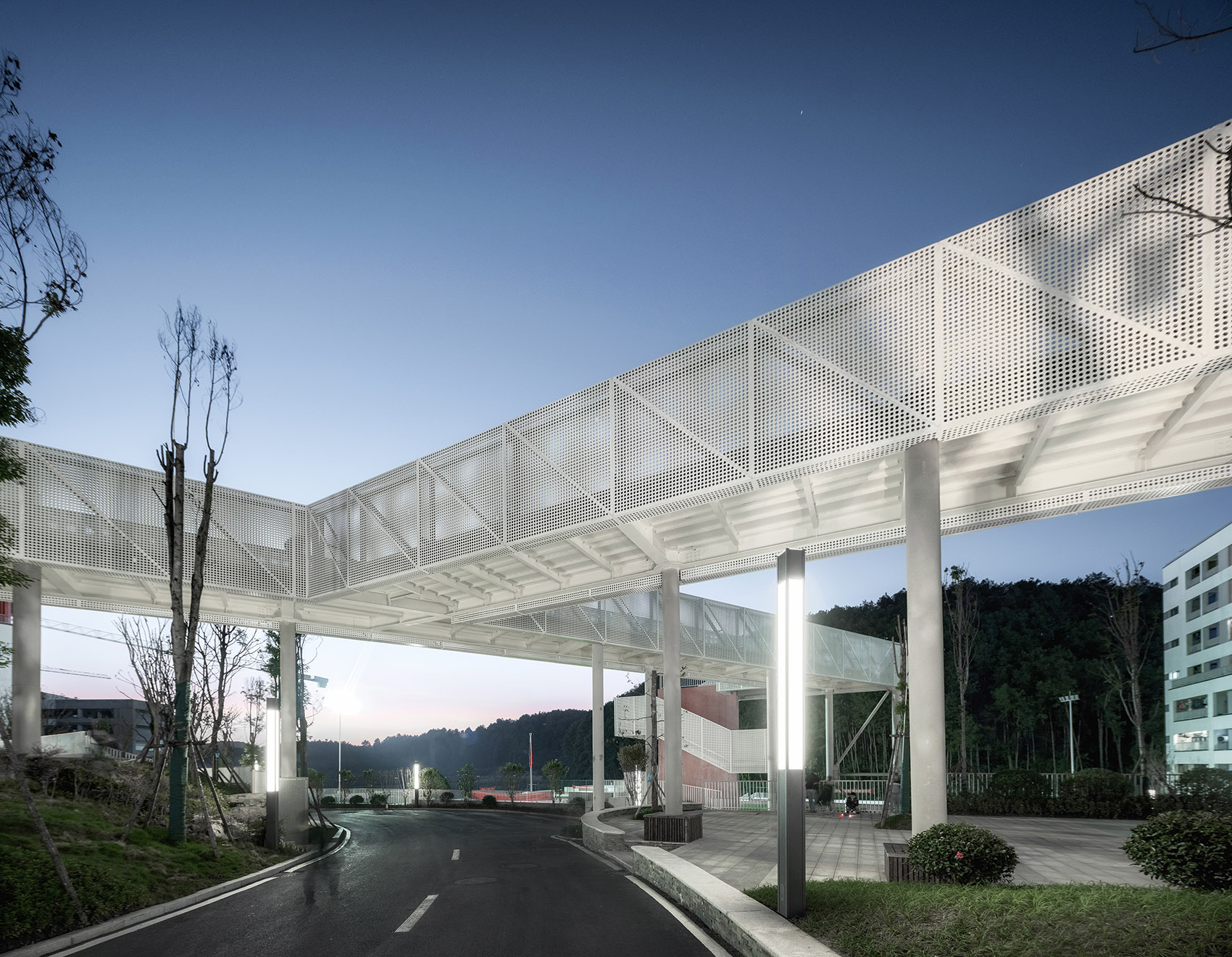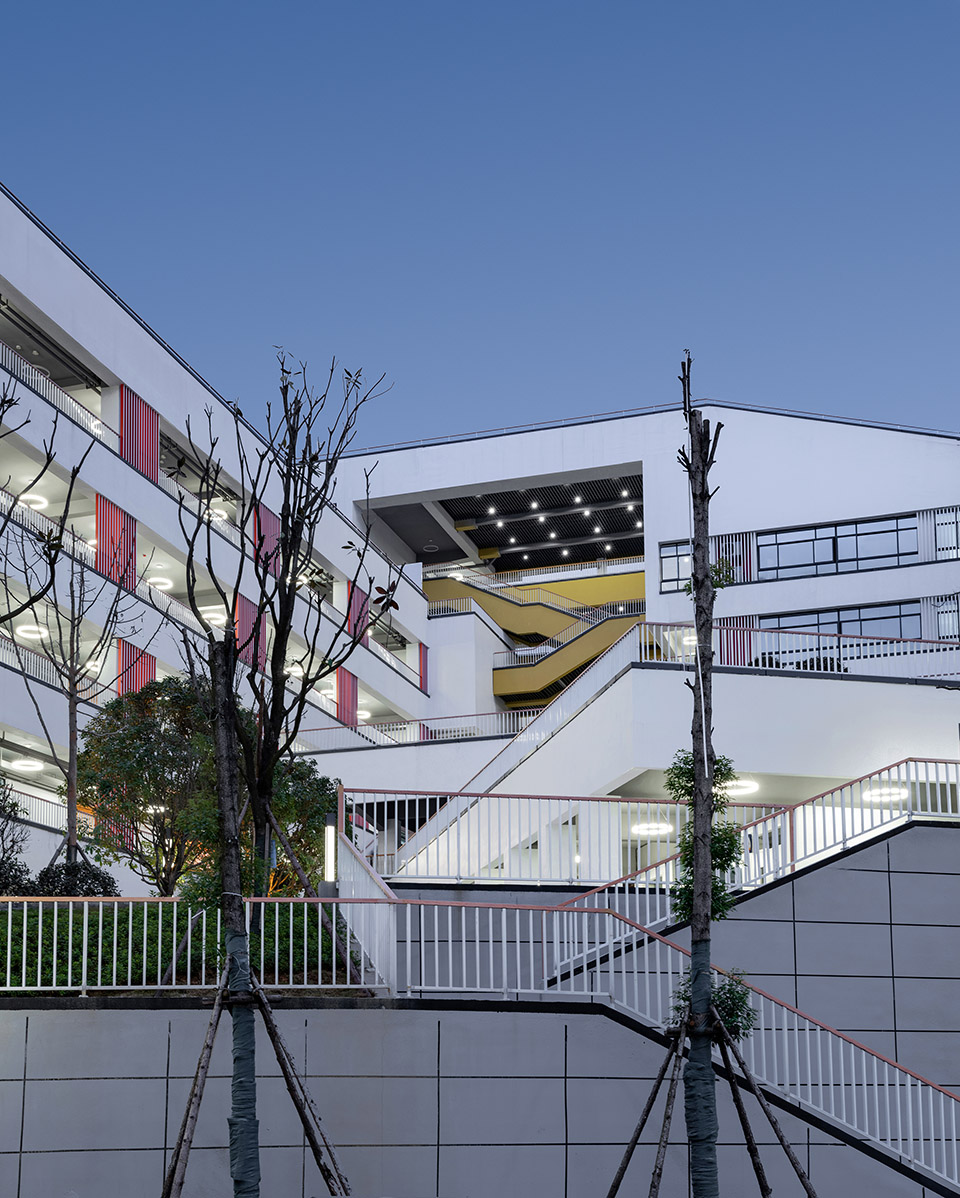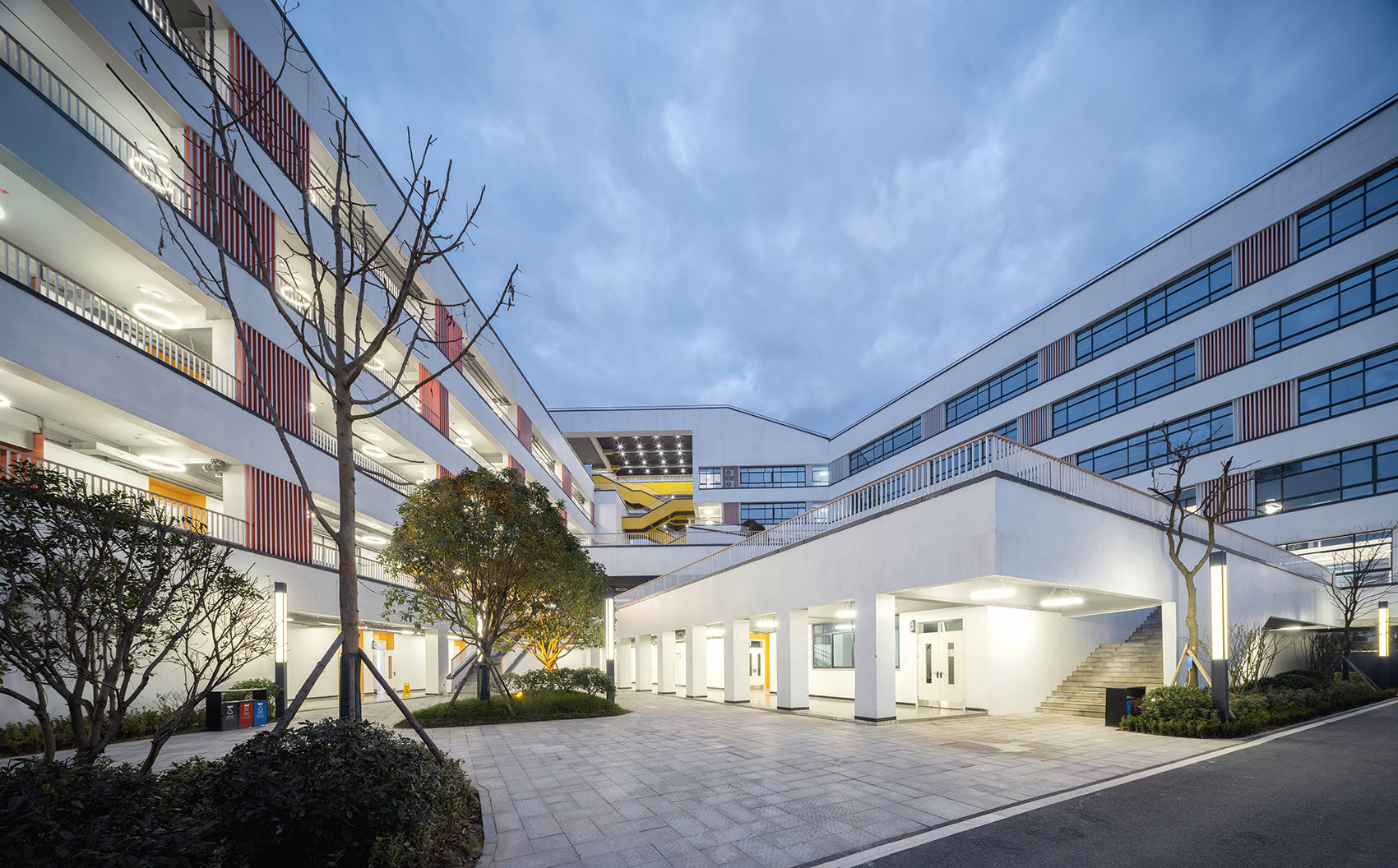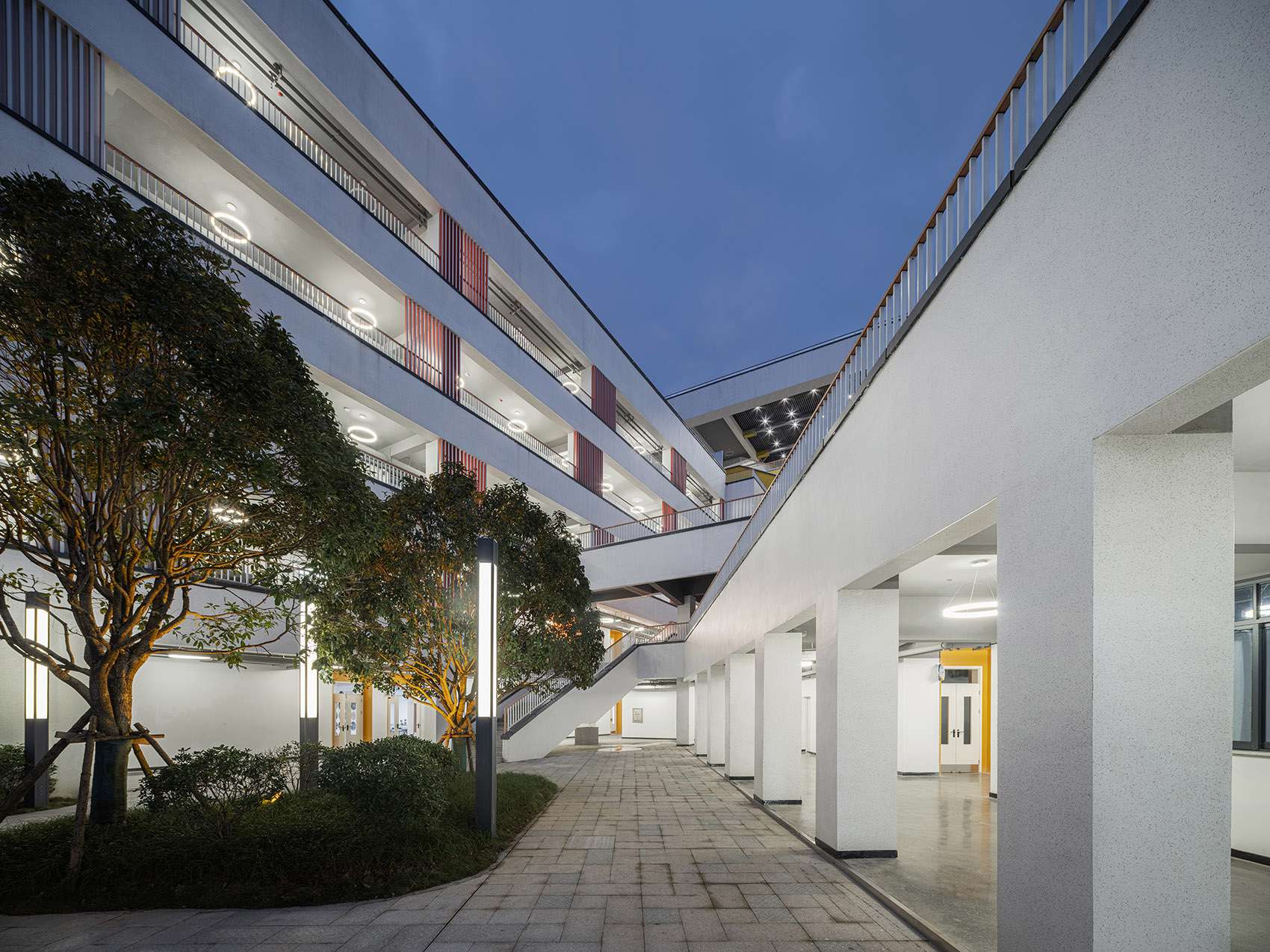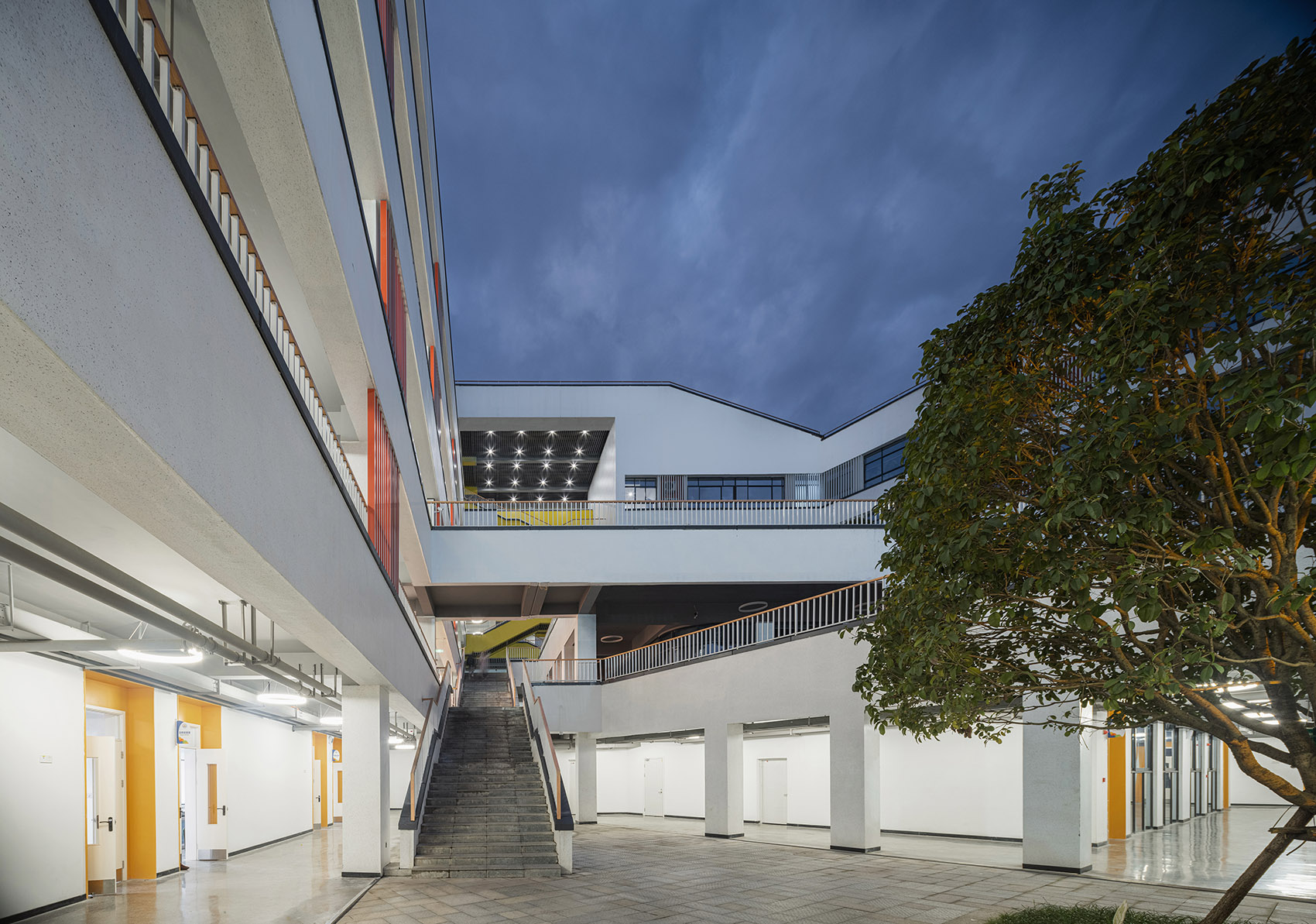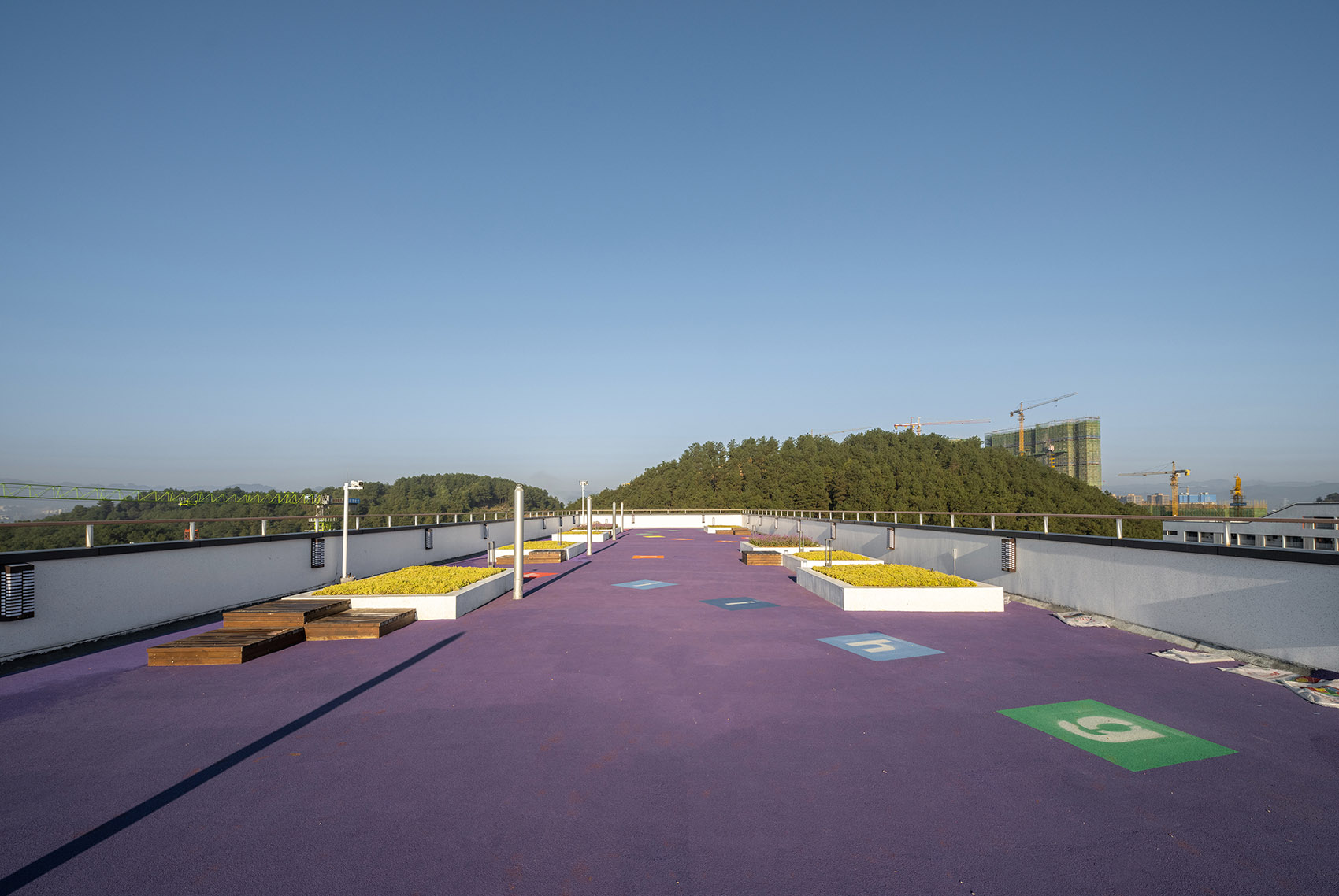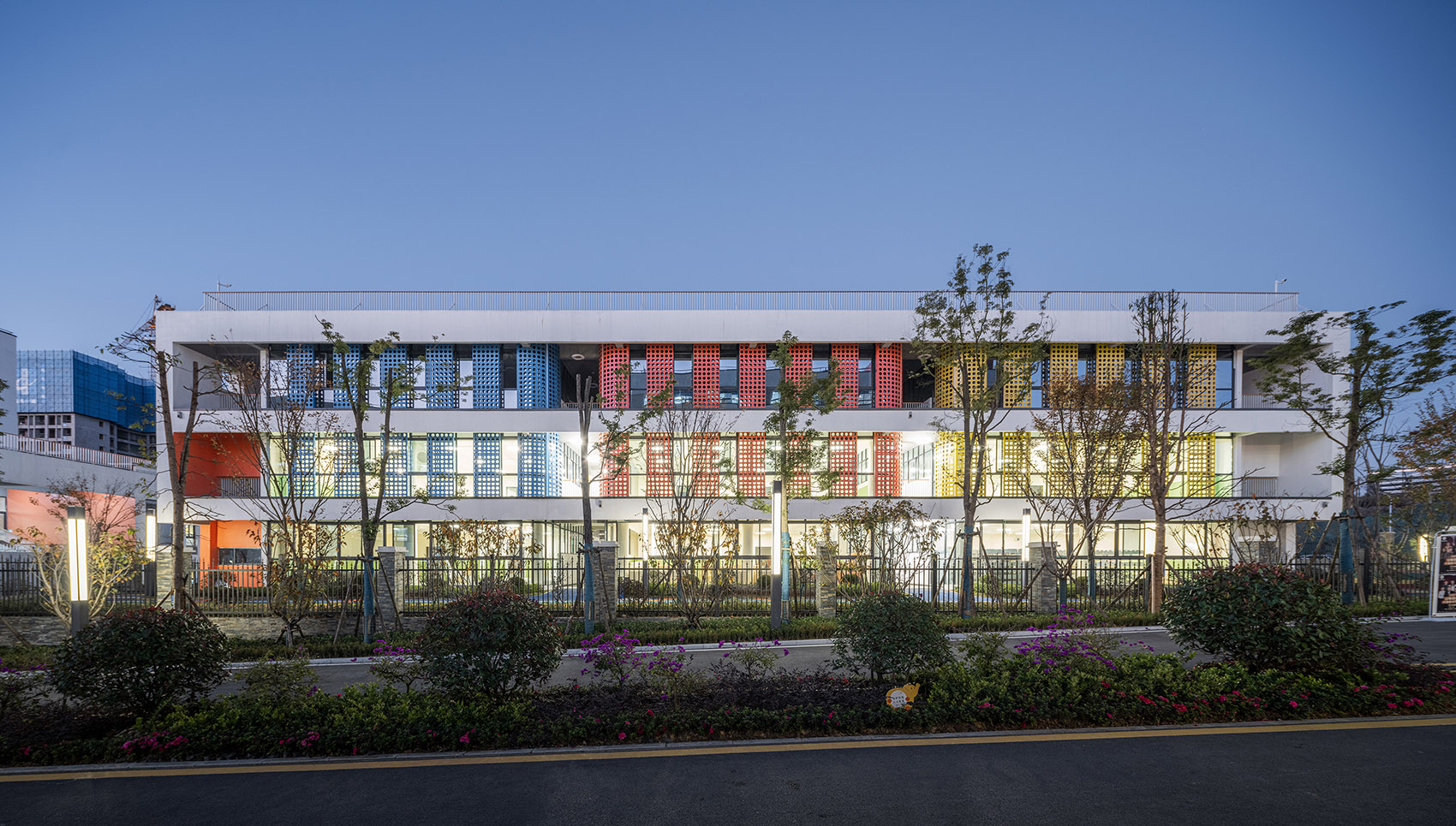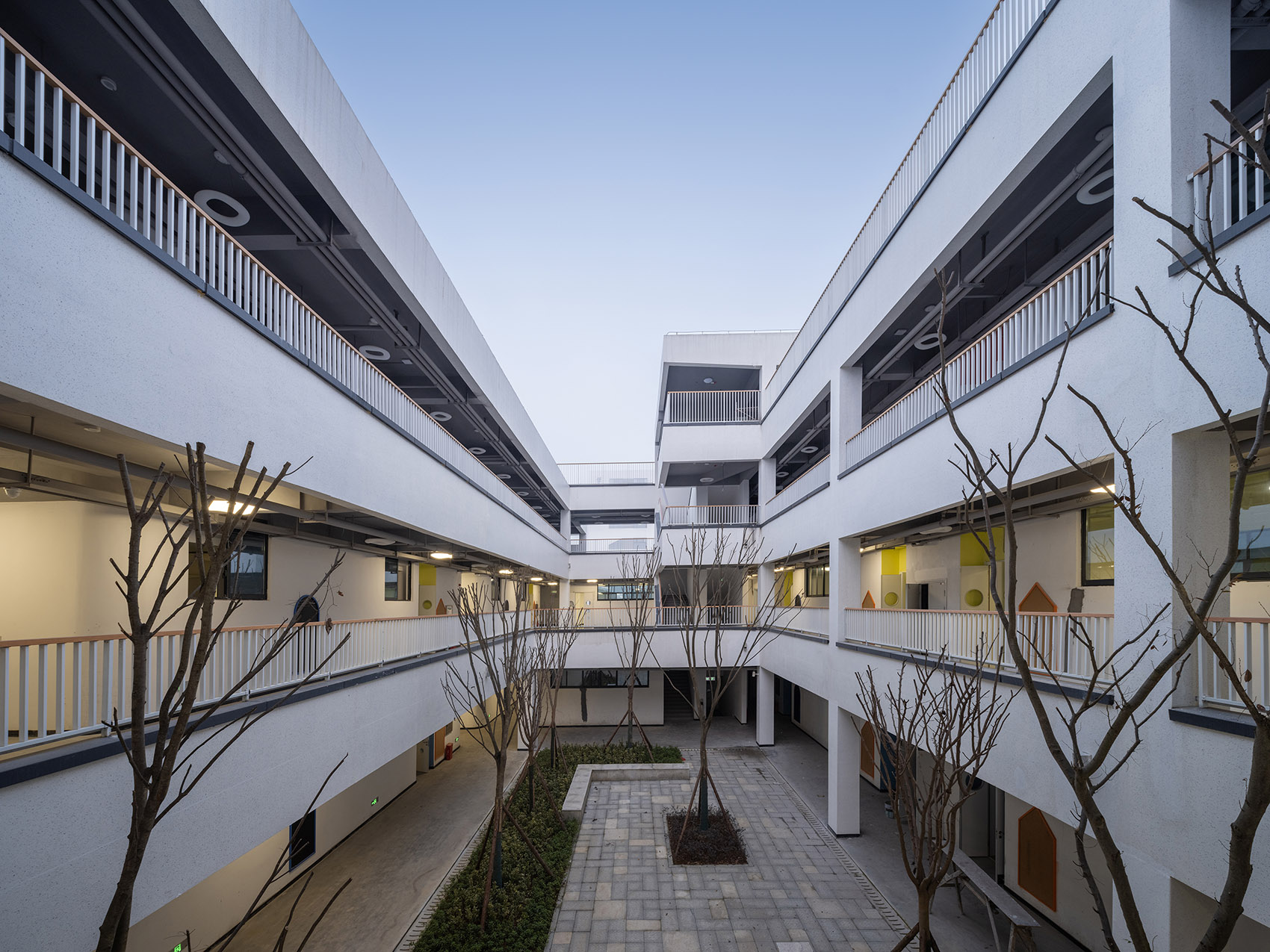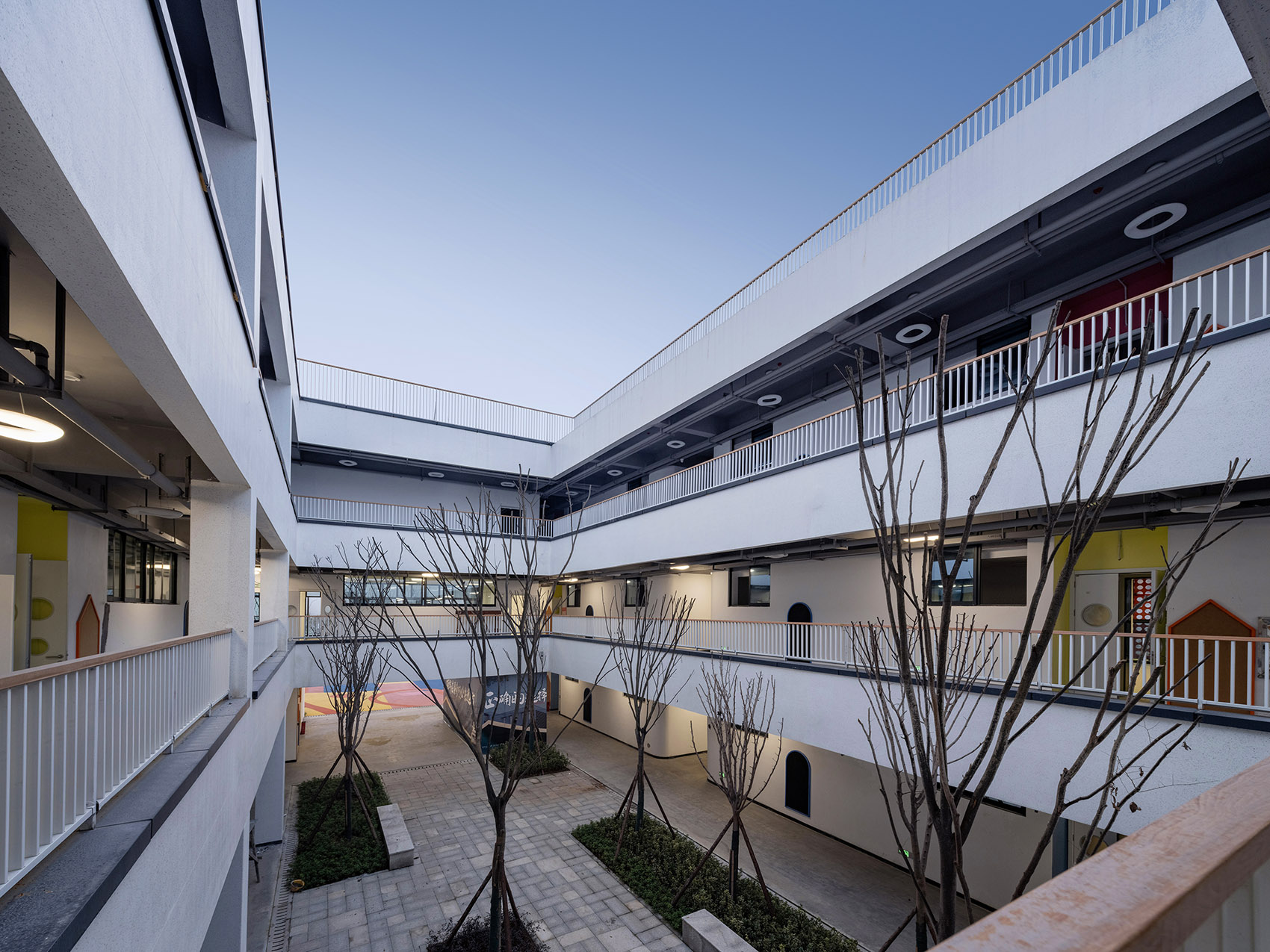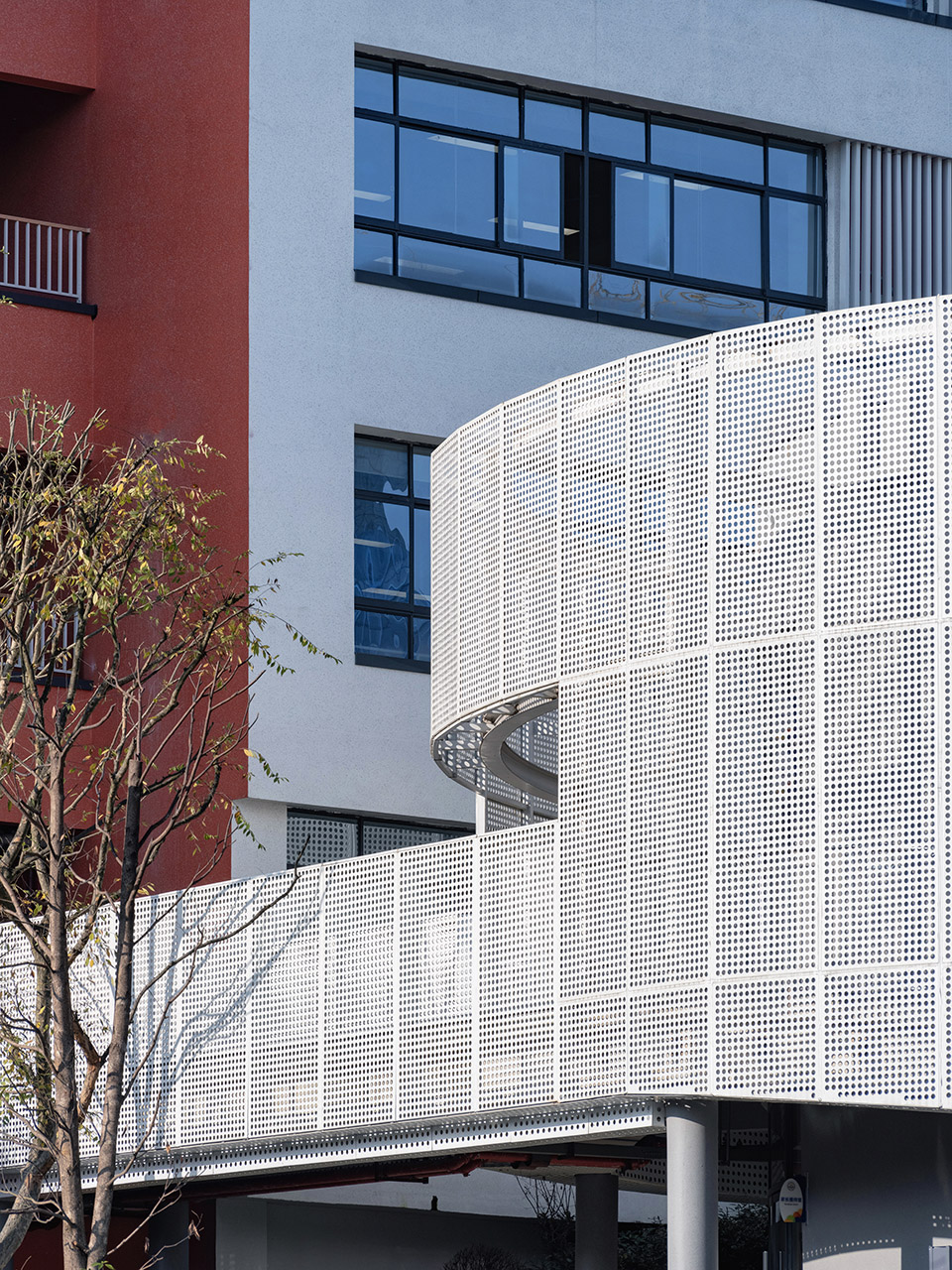湘郡礼德学校是一所面积10.7万平方米的K12学校,一期3~12岁学段建筑已大部交付使用,二期13~18岁学段预计于2022年秋季交付。学校校址位于沈从文先生笔下纯美的湘西山水之间。场地初始仅东北角一条原生小径能够进入,沿山麓蜿蜒向南,连接场地南侧尚在规划中的城市道路,并将占据场地3/4面积的丘陵与相对平缓的谷地区隔开来,实测场地高差约52M。场地东、南连天继日的山系间,杭瑞高速从崖壁贯出,逶迤南去。
▼山雾中的校园,Campus in the Mist ©崔旭峰 时差影像
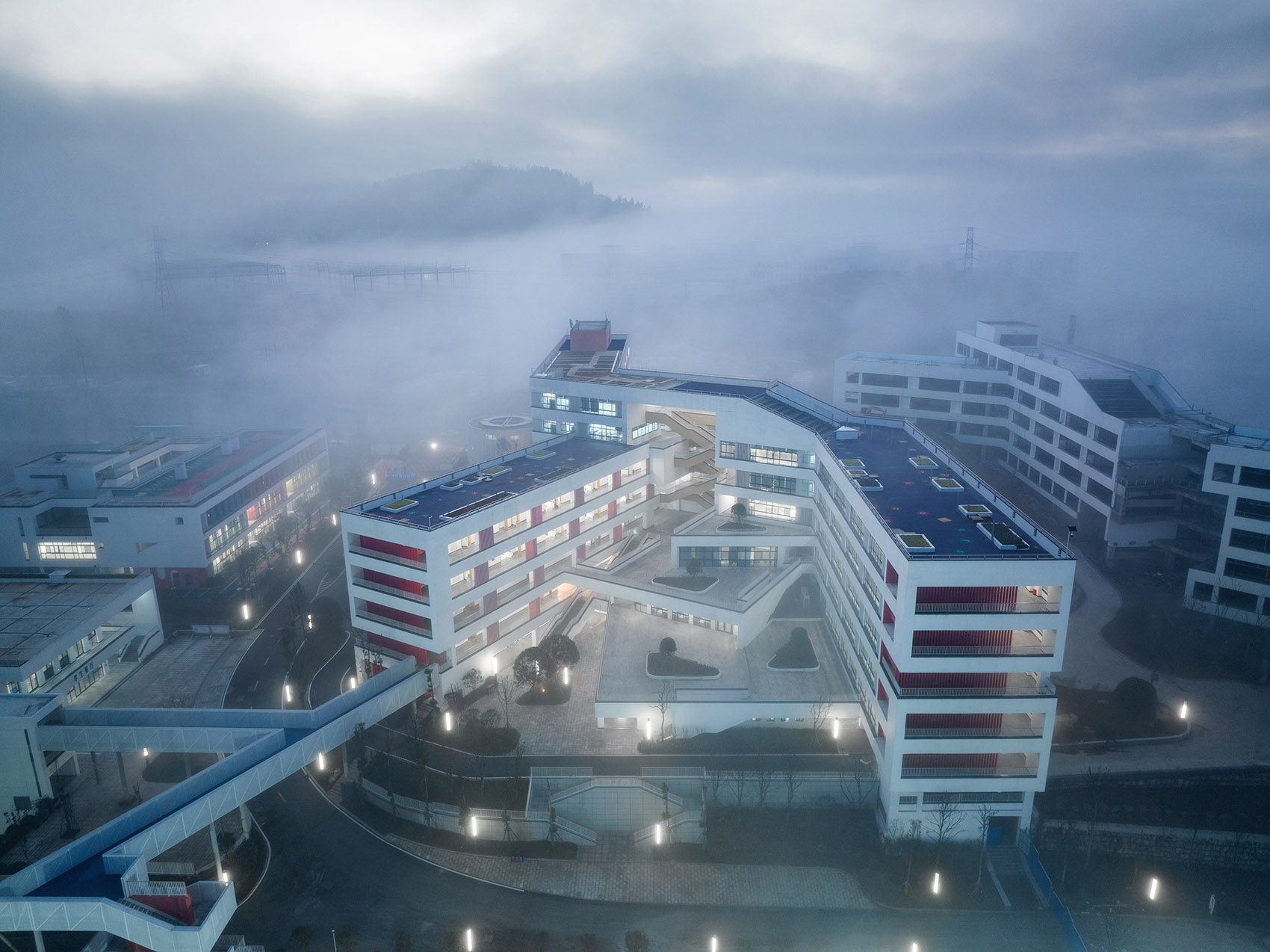
Xiangjun Lide School is a K12 campus with an area over 107,000 square meters. Phase I of the campus has already been delivered,which is for ages 3 to 12. Phase II for ages 13 to 18 , is expected to be delivered in next autumn. The site is located in a beautiful landscape of western Hunan as written by Mr. Shen Congwen. The site is initially accessible only by a native path in the northeast corner, which winds southward along the foothills of the mountains, connecting the city road which is still under planning. The path separates the hills, which occupy 3/4 of the site, from the valley. The measured site drop is about 52 meters. Among the mountain in south and east of the site, the Hang-Rui Expressway runs out from the cliff and winds southward.
▼场地原貌,Original appearance of the site ©象外营造工作室
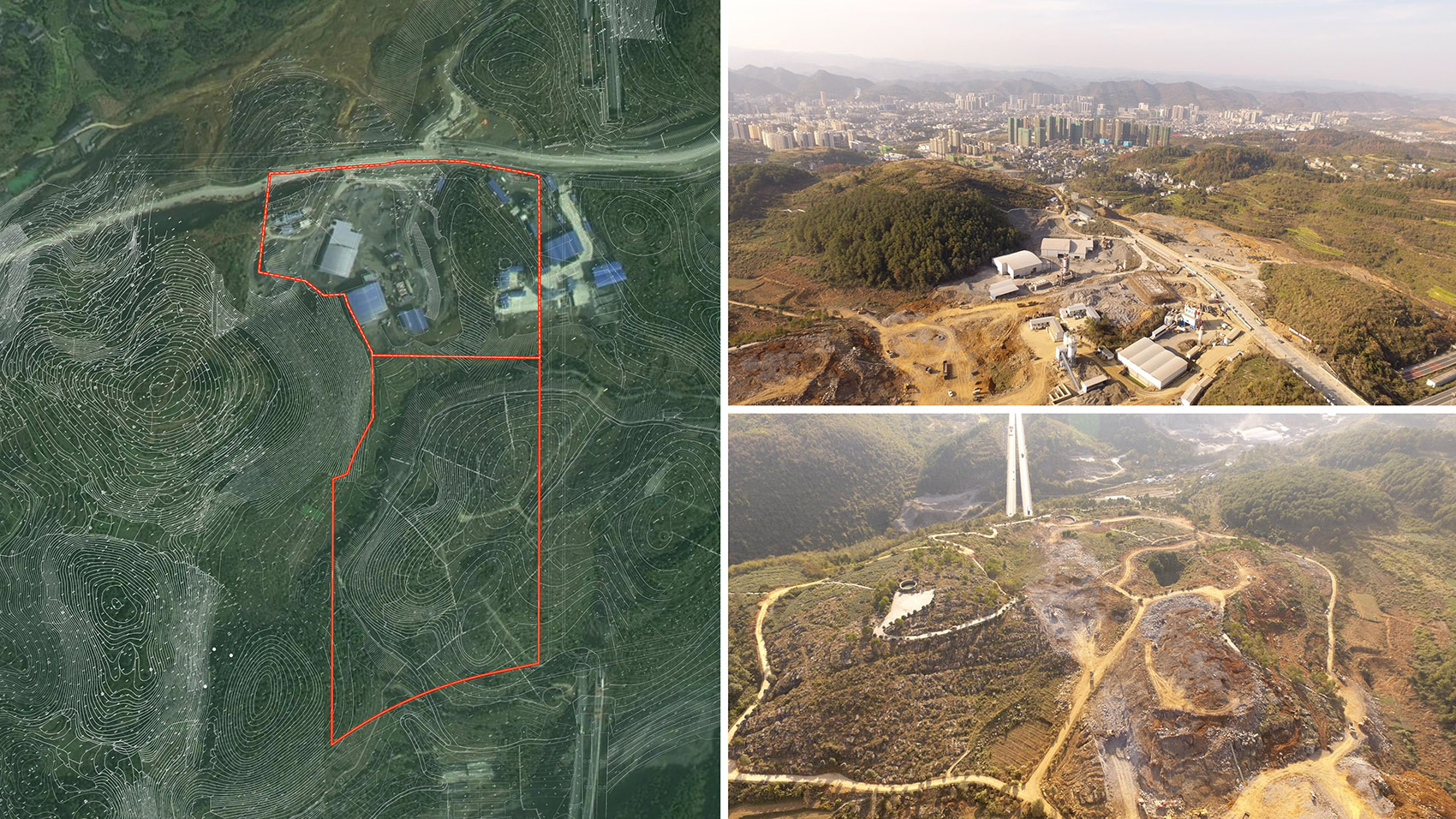
▼原生小径勾勒出山体的自然样貌 Native trails outline the natural appearance of the mountain ©象外营造工作室

面对这样一方自然造化的场地,我们坚信这些绵延不绝的石头山所造就的环境基质,是这里的孩子之所以能长为“这里人”的根本教义。设计过程中的核心思考,便是如何在充分尊重和保持原有山体地貌的基础上,将作为外来人造物的建筑植入其间,与场地以及周边山体环境形成积极的对话共生。
With such a naturally created site, we firmly believe that the environmental matrix created by these endless rocky mountains is the fundamental teaching that makes the children grow up to be real local residents. The core consideration in design is how to fully respect and maintain the original landscape, while implanting the buildings, which considered to be intrusive man-made object to form a positive dialogue and symbiosis with the natrual landscape.
▼校园鸟瞰,书香正浓,Aerial view of the campus, the Fragrance of Books ©崔旭峰 时差影像

原生的山麓小径勾勒出山体自然的样貌,也是整块场地在规划初始的控制性线索。小径整修后,成为贯穿校园的主要交通路径,两端联结城市道路的节点则分别平整作为低龄学段和高龄学段的主要出入口。小径西侧相对平整的谷地作为主要的文体活动和生活区域,东侧成簇的山体,则留给主要的教学空间体量去消化。
The native trail sketches the natural appearance of the mountain and is the controlling cue for the entire campus plan. After renovated, the trail becomes the main traffic path through the campus, and the nodes at both ends that connect to the city roads are flattened as the main entrances for the junior and senior sections separately. The valley on the west side of the trail is used as the cultural, sports and living area, while the hills on the east side are left to be absorbed by teaching space.
▼建筑形体生成 Generation of building volume ©象外营造工作室
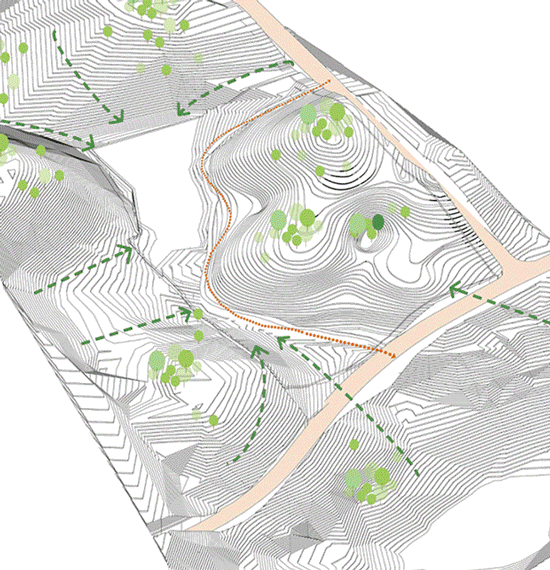
小学、初中、高中三组主要线性体量平行于等高线,贴伏于山体半高处伸展,让出完整的丘顶。同时,在每组体量内部通过垂直方向2层高度的扭转变化进一步消化地形起伏,寄望于观者从建筑本身亦能够清晰地阅读出山形地势。
The three main linear volumes of the primary, middle and high schools are parallel to the contours and stretch out halfway up the hills, preserve the top of the hills. Within each group of volumes, meanwhile, the topography is further digested through the twist in vertical direction, hoping that the viewer can read the mountain topography from the building itself.
▼随山势起伏的教学综合楼,Teaching complex that undulates with the mountain ©崔旭峰 时差影像

▼教学综合楼出入口,Entrance and exit of the teaching complex ©崔旭峰 时差影像

▼入口阶梯近景 Closer view to the stairs at the entrance ©崔旭峰 时差影像
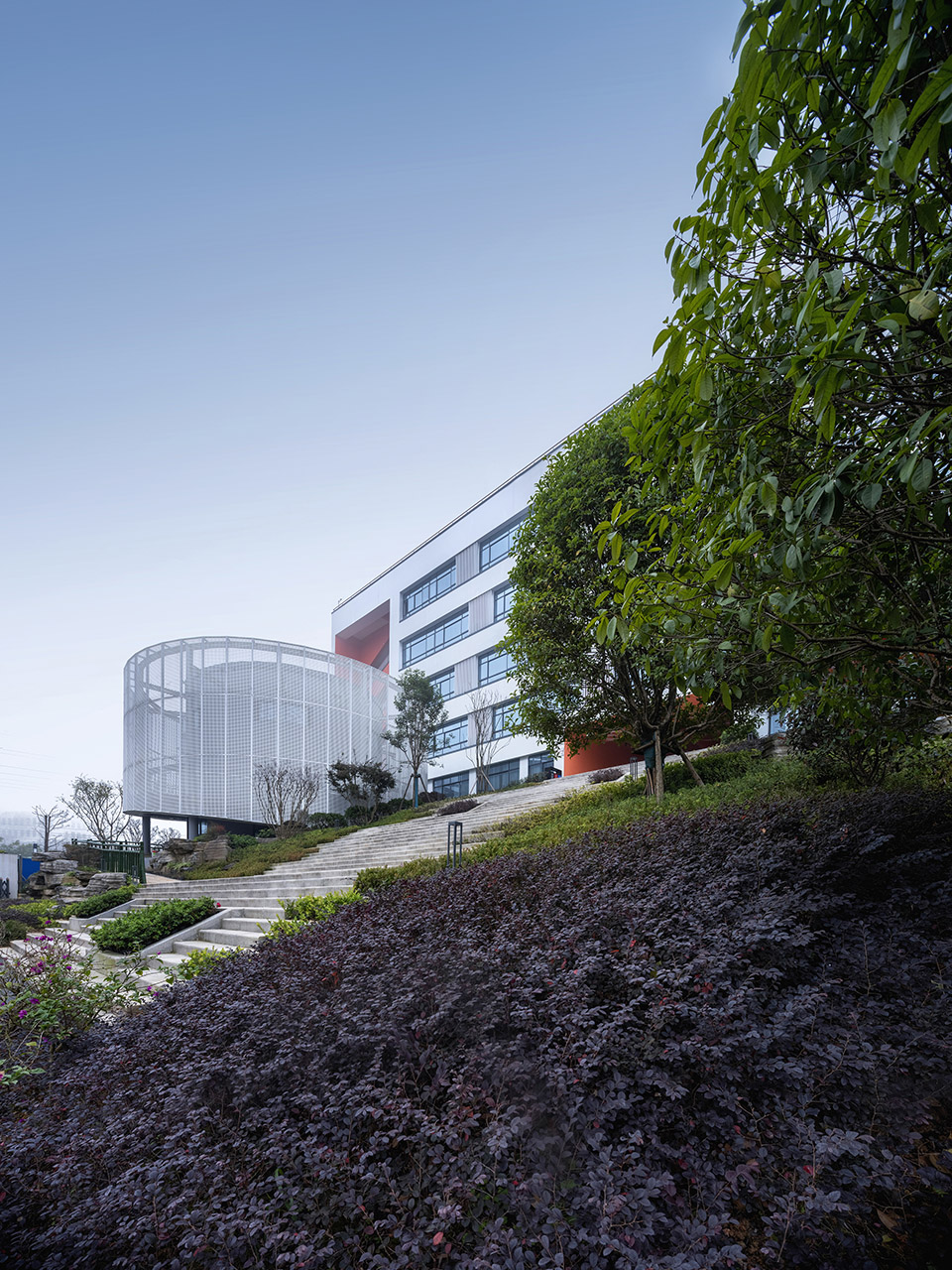
▼教学综合楼一隅,A corner of the teaching complex ©崔旭峰 时差影像


满足百余个教学班使用需求的大量室外运动场,一度是我们保留原生环境基质的重大挑战。谷地区域地形平整,但尺度有限,必须劈除1/3以上的山体方能容纳。权衡之下,高龄学段的400M运动场被安置在场地东南起伏较小的台地上。清表、台地平整、基础开挖产生的土石方被填置于谷地中。标高整体抬升后的谷地,除了文体活动和生活区的建筑场地外,还提供了低龄学段的运动场和丰富的球类场地。
To lay out the sports fields which can meet the demand of over a hundred classes’ usage was once a challenge for us. The topography of the valley was flat, but is restricted in scale, while more than 1/3 of the hill had to be destroyed to accommodate. On balance, the 400M sports field for the senior section was placed on a less undulating terrace at southeast of the campus. The earth and rock caused by terrace leveling were placed in the valley, and the elevation of the valley is therefore raised as a whole. In addition to construction sites for living areas, it also provides a playground for young students and a variety of game venues.
▼教学区与生活区通过“Y”字形连桥相连 The teaching area is connected to the living area by a “Y” shaped bridge ©崔旭峰 时差影像
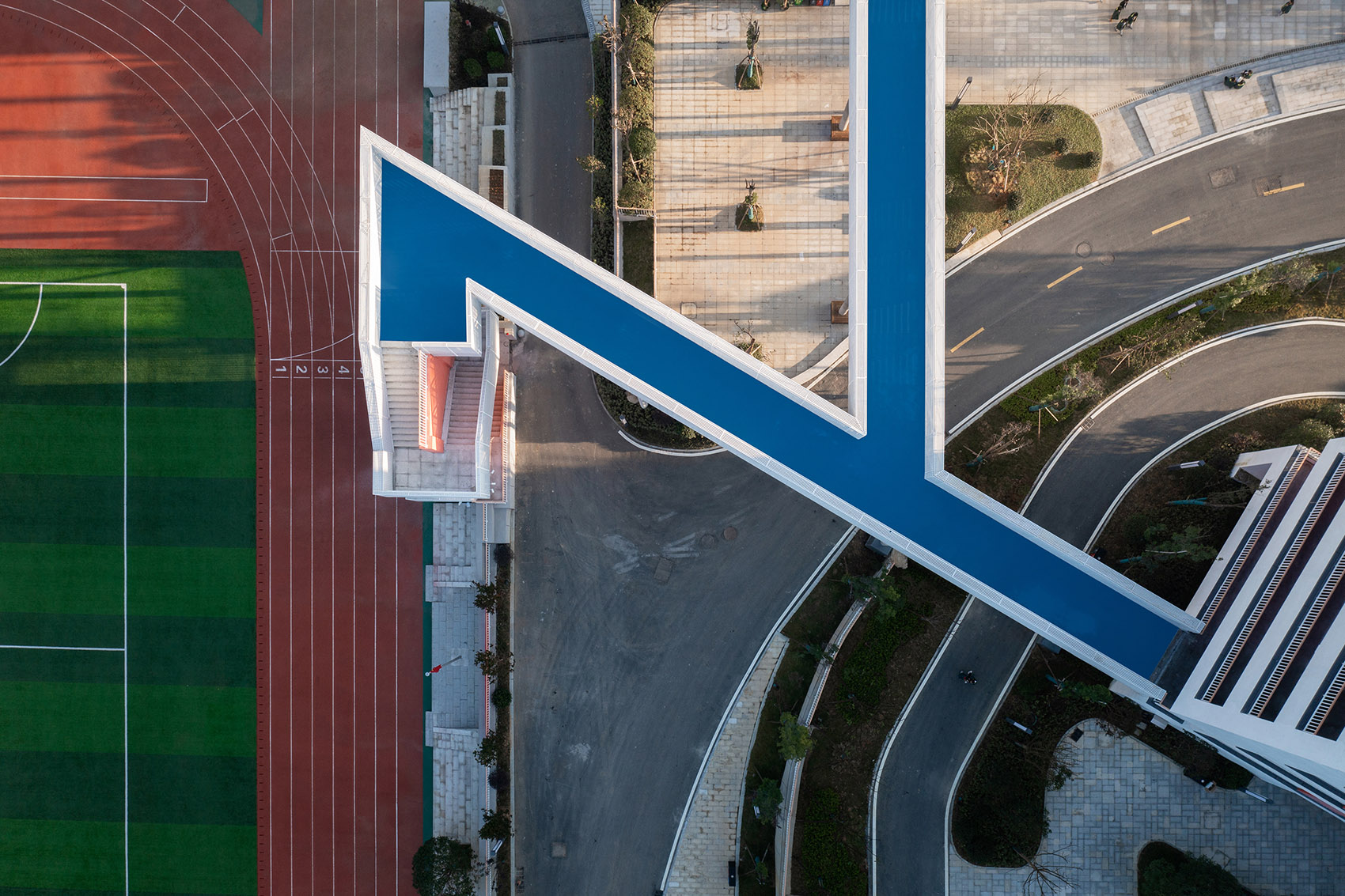
▼连桥外观,External view of the bridge ©崔旭峰 时差影像
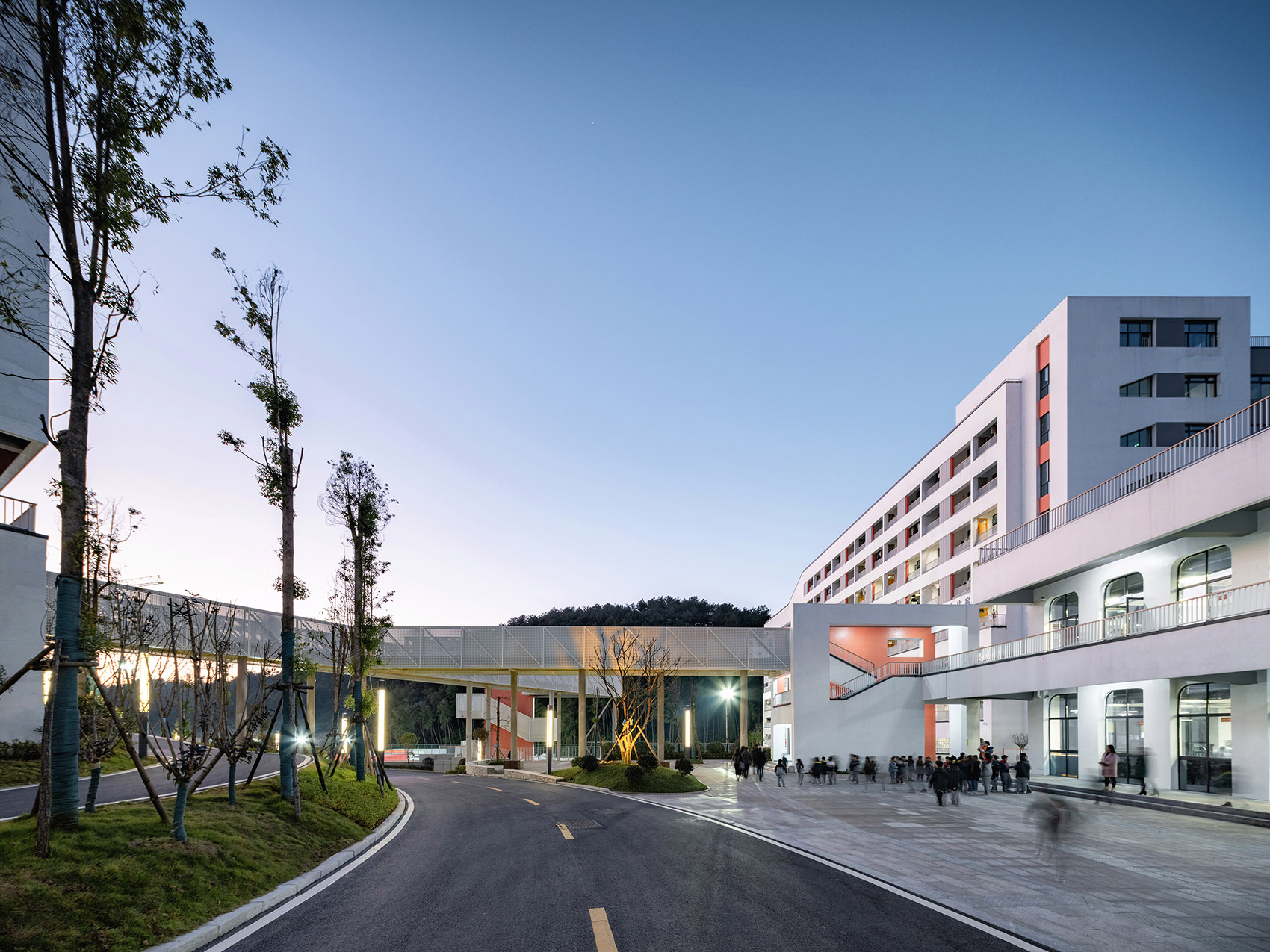
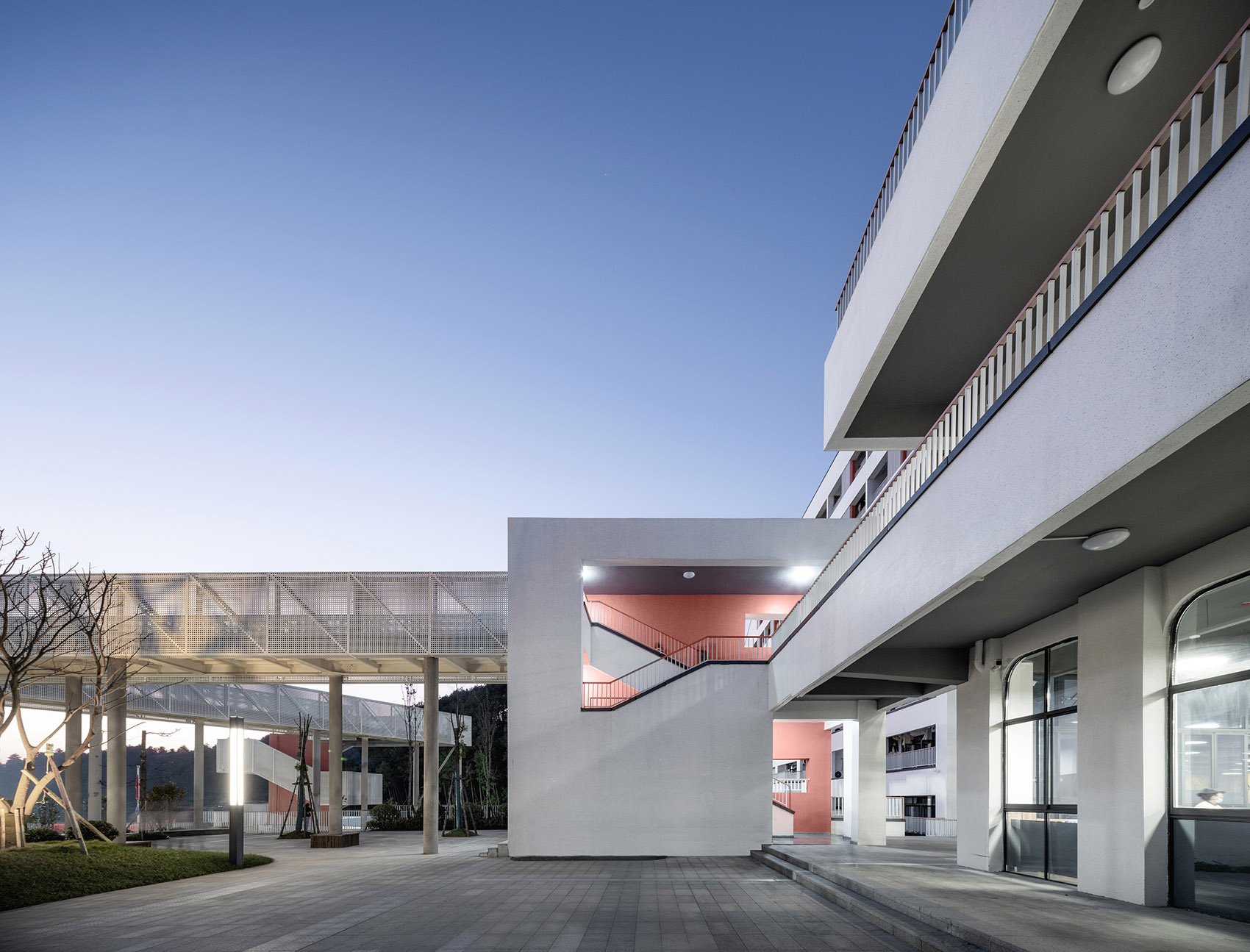
毗邻高速公路隧道的区位条件,限制了爆破等破坏性场地处理手段的应用。我们反复多次、通过不同软件模拟对比了场地处理方案,以最大限度地减少场地平整的工程量。同时,为了降低填方区基础处理的难度,设计结合活动场馆、车库、接送站等对采光没有必要诉求的功能,对标高抬升后形成的架空空间进行了最大化利用。
▼土方工程分析计算,Earthwork analysis and calculation ©象外营造工作室

The site is adjacent to the highway tunnel, which limits the application of destructive site treatment means such as blasting. We repeatedly compared site treatment options through different software simulations in order to minimize the amount of leveling work. Meanwhile, in order to reduce the difficulty of fundation processing in the filled area, the design combined with students’ common rooms, garage, transfer stations, which have no necessary demand for natrual light, to maximize the usage of the overhead space formed in the raised vally area.
▼生活区,Living area ©崔旭峰 时差影像
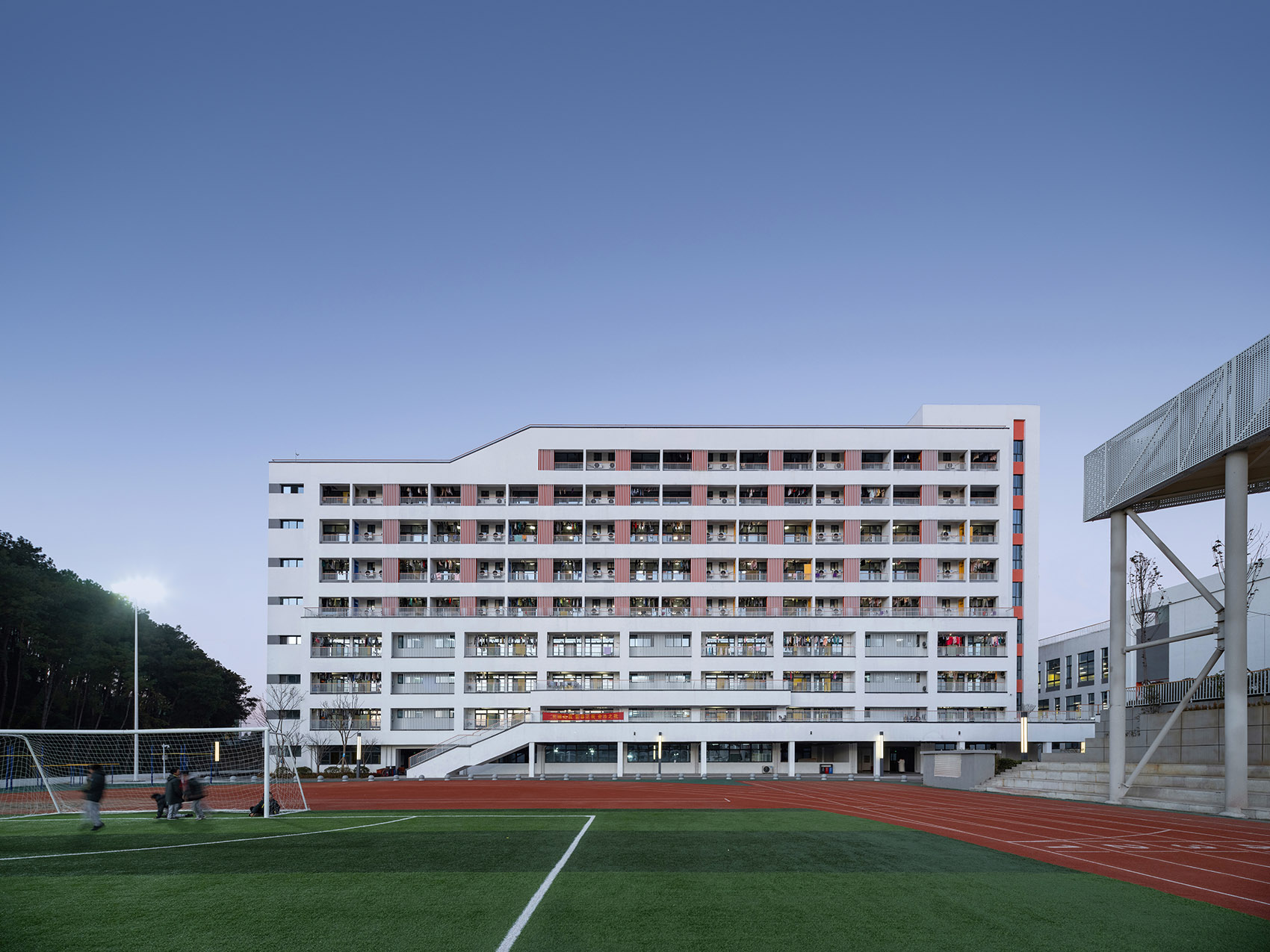
为了消解线性体量内部较长的流线带来的使用和体验问题,也为了进一步优化建筑与西侧山体环境的对话关系,每组教学体量又朝向西侧山体,以垂直于等高线的方向生出几组衍生的“枝杈”。
In order to eliminate the usage and experience problems caused by the long moving lines inside the linear volumes, and to further optimize the dialogue between the building and the mountain landscape on the west side, each group of teaching volumes generates several groups of “branches” in the direction perpendicular to the contour line, facing the mountain in the west.
▼朝向西侧山体延伸的“枝杈”,The “branches” extending towards the west side of the mountain ©崔旭峰 时差影像
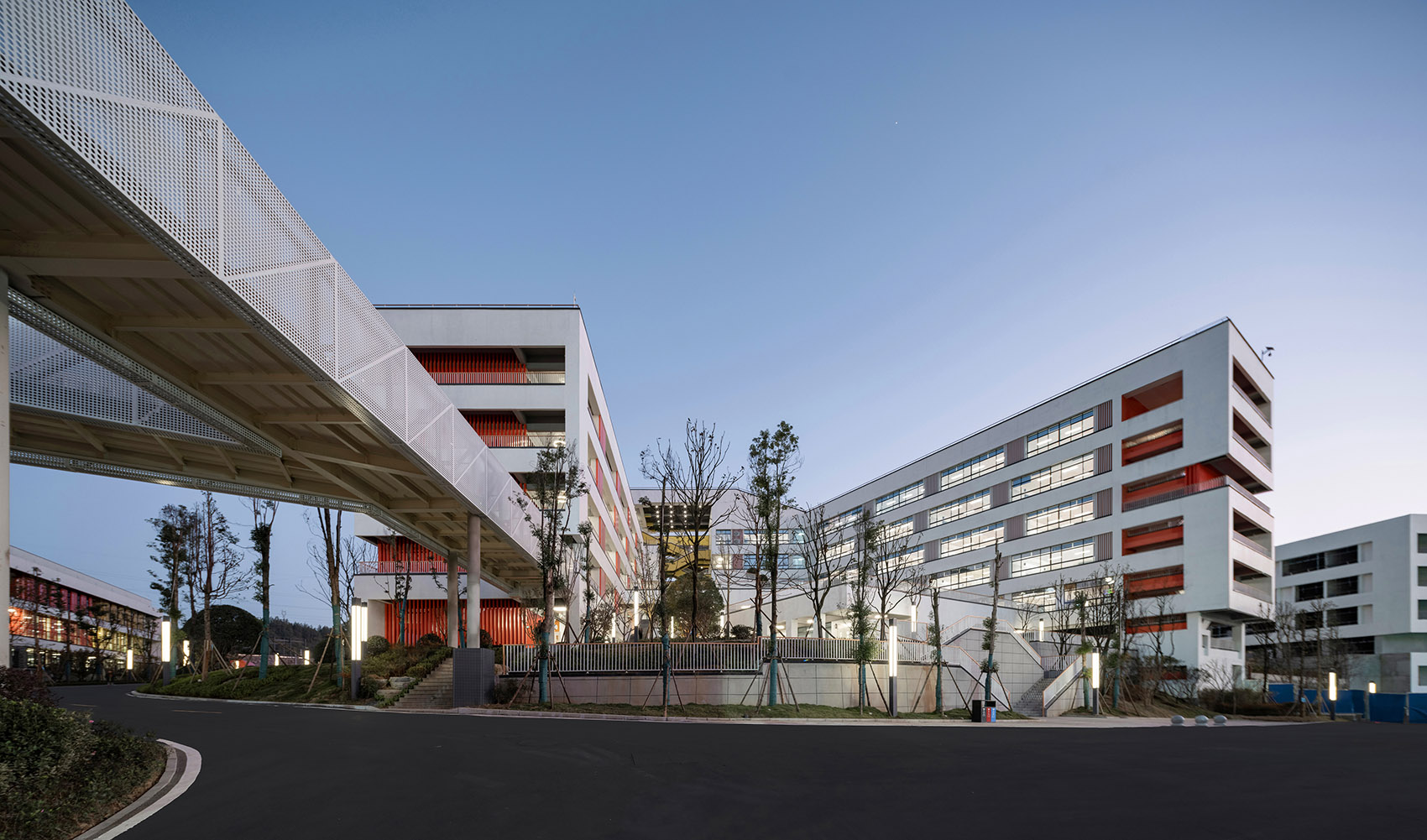
每组扭转角度经过计算后的“枝杈”的山面,是一个个整合了交通核和出挑平台的取景框。“枝杈”间围合出的朝向山体打开的区域,是每个学部的“自留地”。依山体坡向叠落的自由体量之中,是丰富的情景式和项目式教学空间。平台之上,是尺度经过优化之后,更贴近原本山谷体验的、留给孩子们课间放风的地方;也是由生活区到教学区的通学过程中,一条颇具趣味的路径选择。
▼剖面分析,Profile Analysis ©象外营造工作室
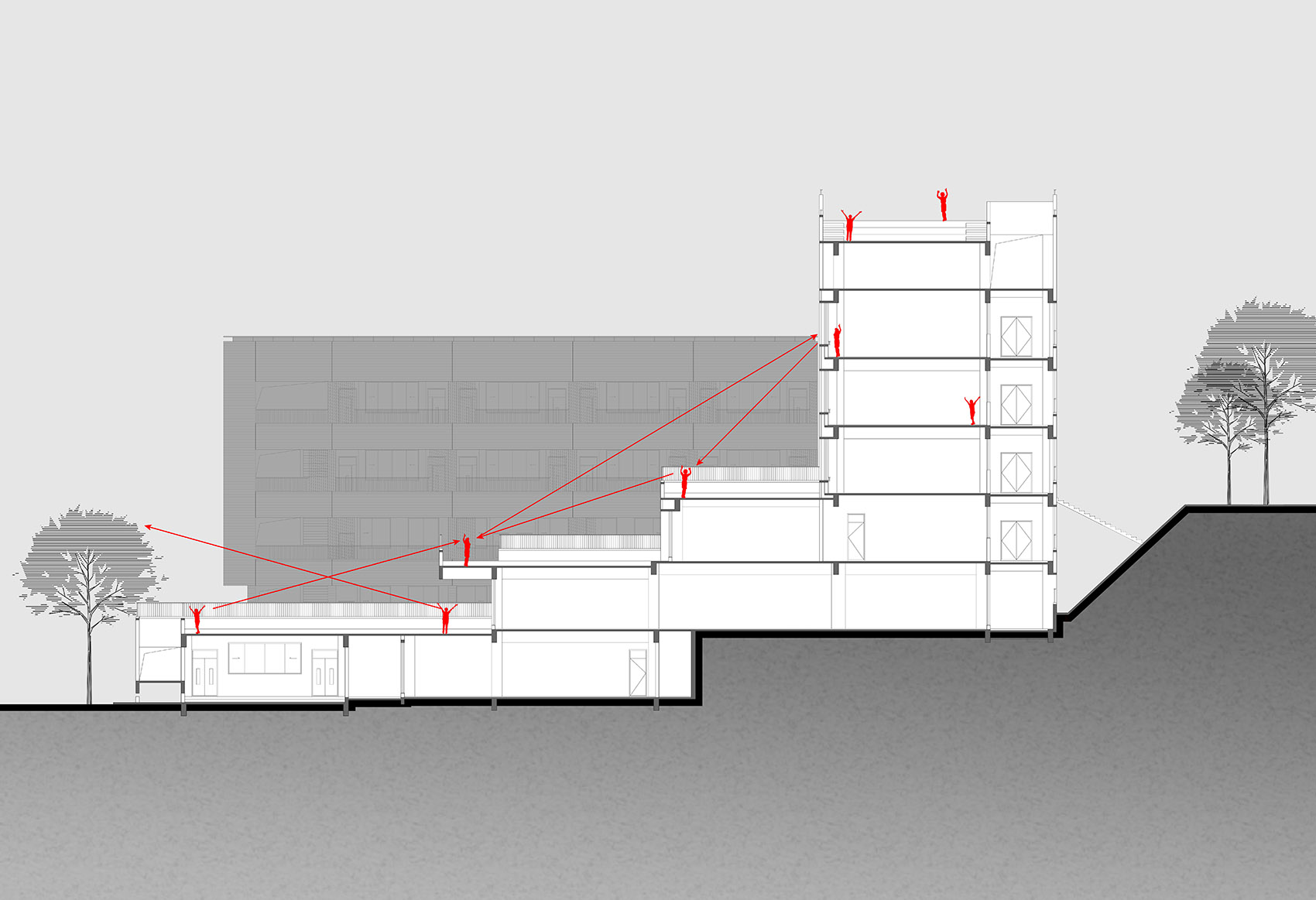
The gable of each “Branch” is a viewfinder that integrates a traffic box and a platform. The enclosed area between the “branches”, which opens up to the hill, is the “own land” of each department. In the free volume that folds down along the slope of the mountain, there are scenario-based and project-based teaching spaces. On top of the platform is place for children to relax, which is closer to the original valley experience; it is also an enjoyable pathway from the living area to the teaching area.
▼“枝杈”围合的活动空间,The activity space enclosed by “branches” ©崔旭峰 时差影像
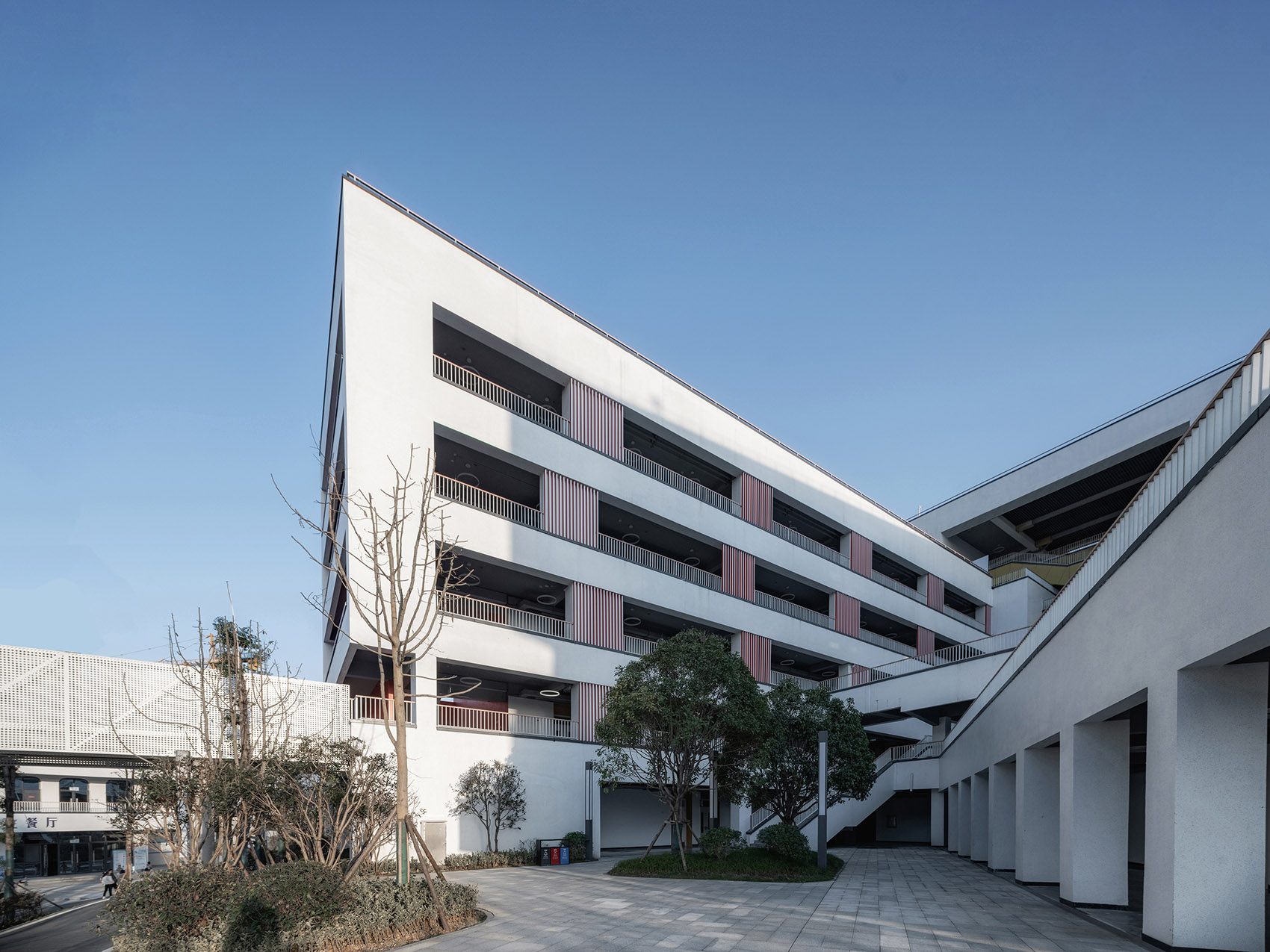

▼楼梯与阳台之间形成视觉联系 Visual connection between the staircase and the balconies ©崔旭峰 时差影像
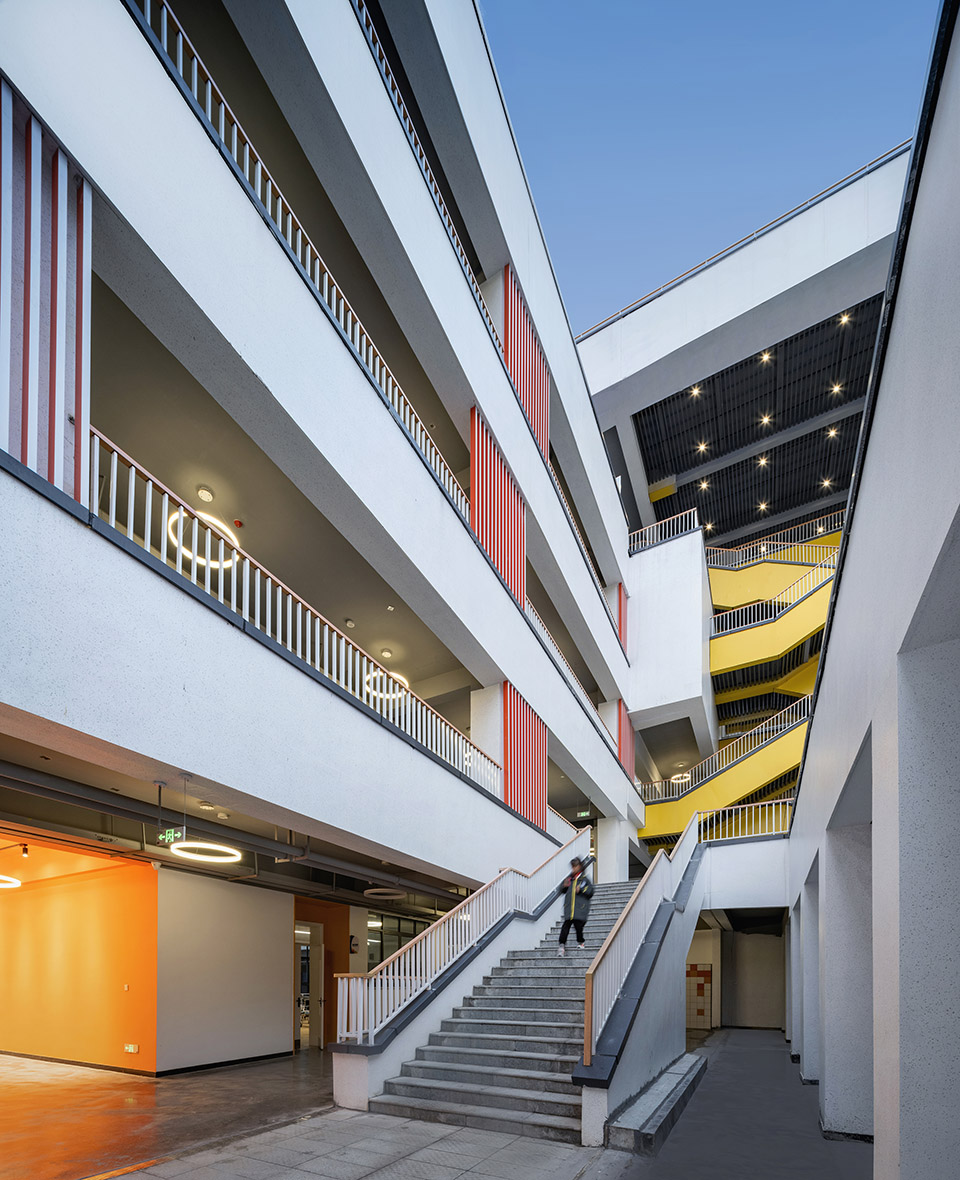
层间伸出的架空连廊,是紧凑的教学时段联结教学、运动和生活空间的高效路径;也是学有余暇,间或放学路上独自感悟的去处。建筑主体上的大尺度开洞和架空楼梯,是“这边”的书声和“那边”的树语混响交融的所在。垂直扭转的屋面,是孩子们户外写生课程的教学场地,也是雾霭之上,携手寄望山外世界的“远方”。
The corridors between floors is an efficient way to link teaching, sports and living spaces during the compact teaching period; it is also a place to sense by oneself after school. The large openings and elevated staircase on the main body of the building are where the kids reading over “here” and the trees talking over “there” reverberate. The vertically twisted roof is the teaching site for the children’s outdoor sketching classes, and the “faraway” place where they can look at the world beyond the mountains together above the mist.
▼联结生活区与教学区的架空连廊 The elevated corridor connecting the living and teaching areas ©崔旭峰 时差影像
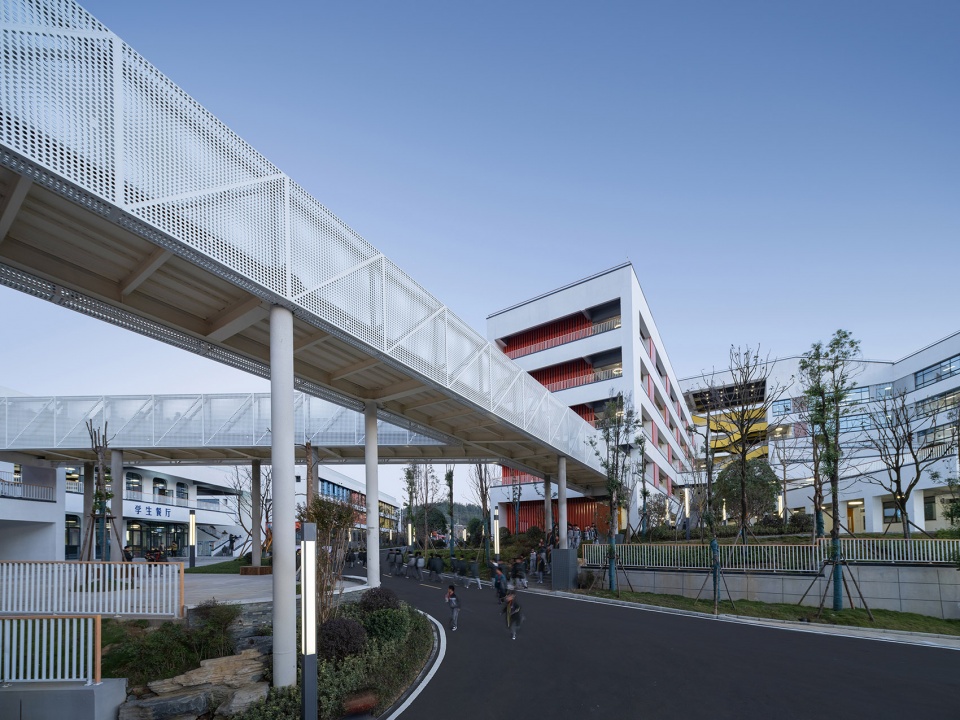
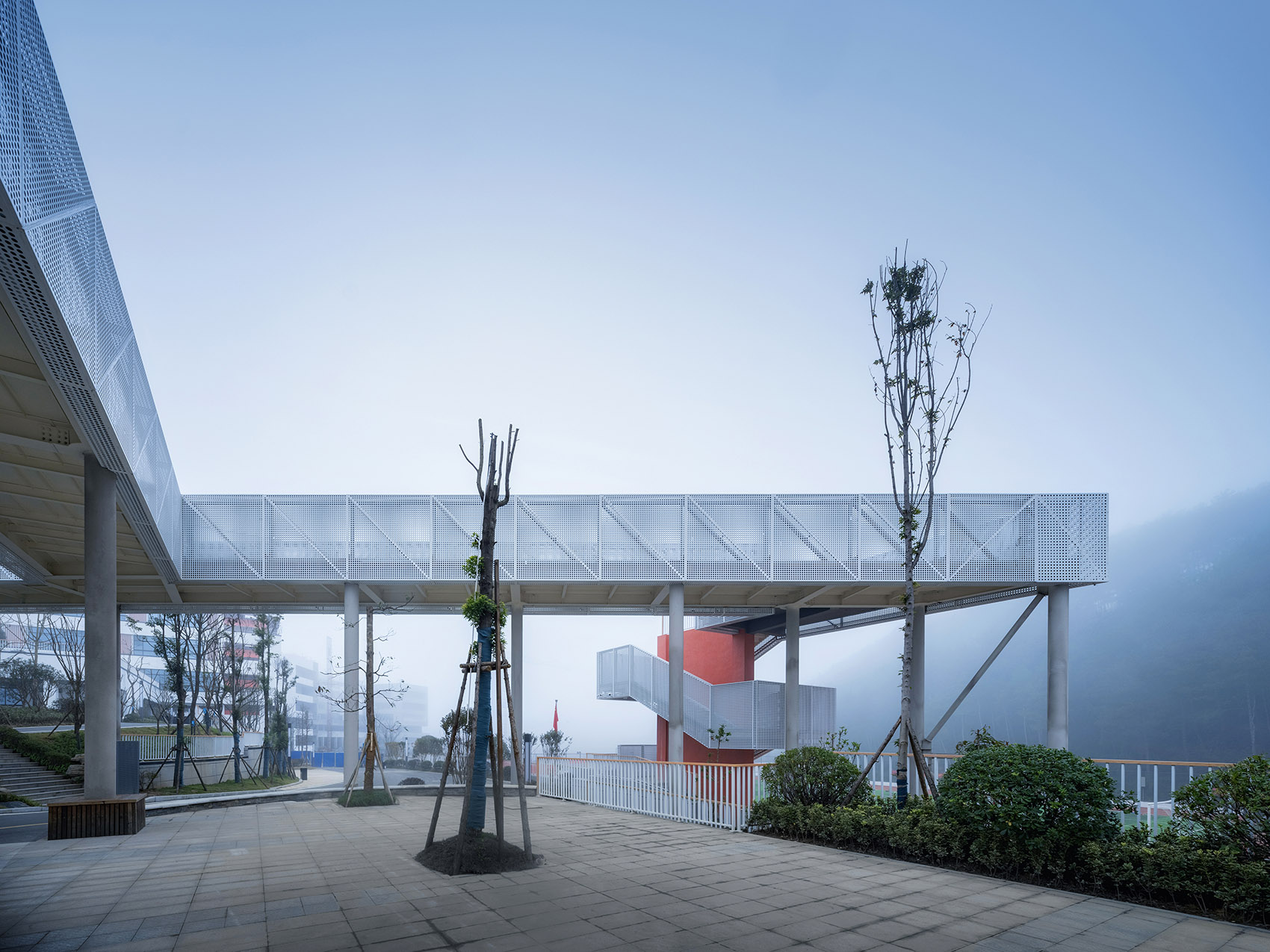
▼综合楼上的连廊,Corridor connecting different parts of the teaching complex ©崔旭峰 时差影像
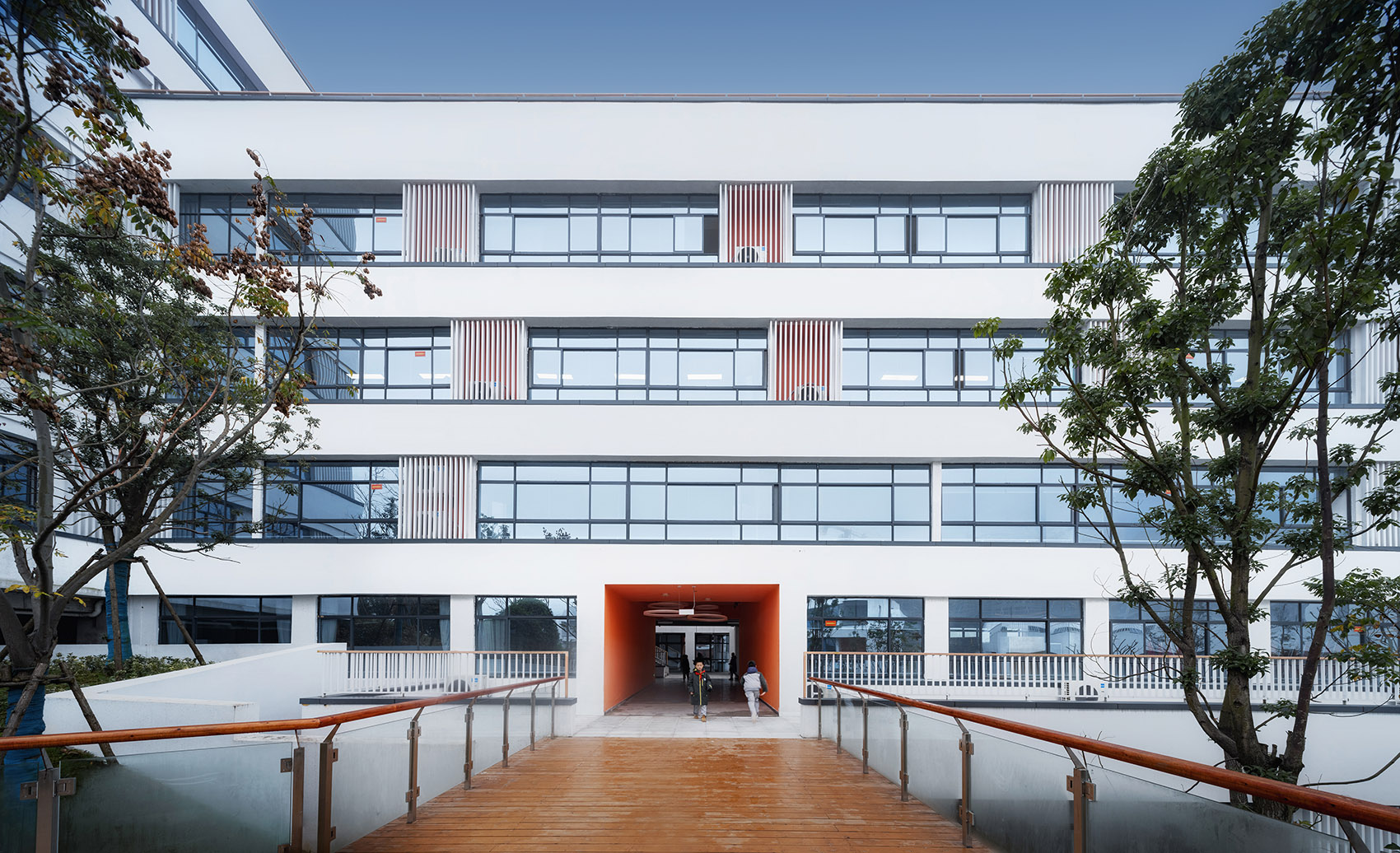
▼连桥与操场,Bridge and the play ground ©崔旭峰 时差影像

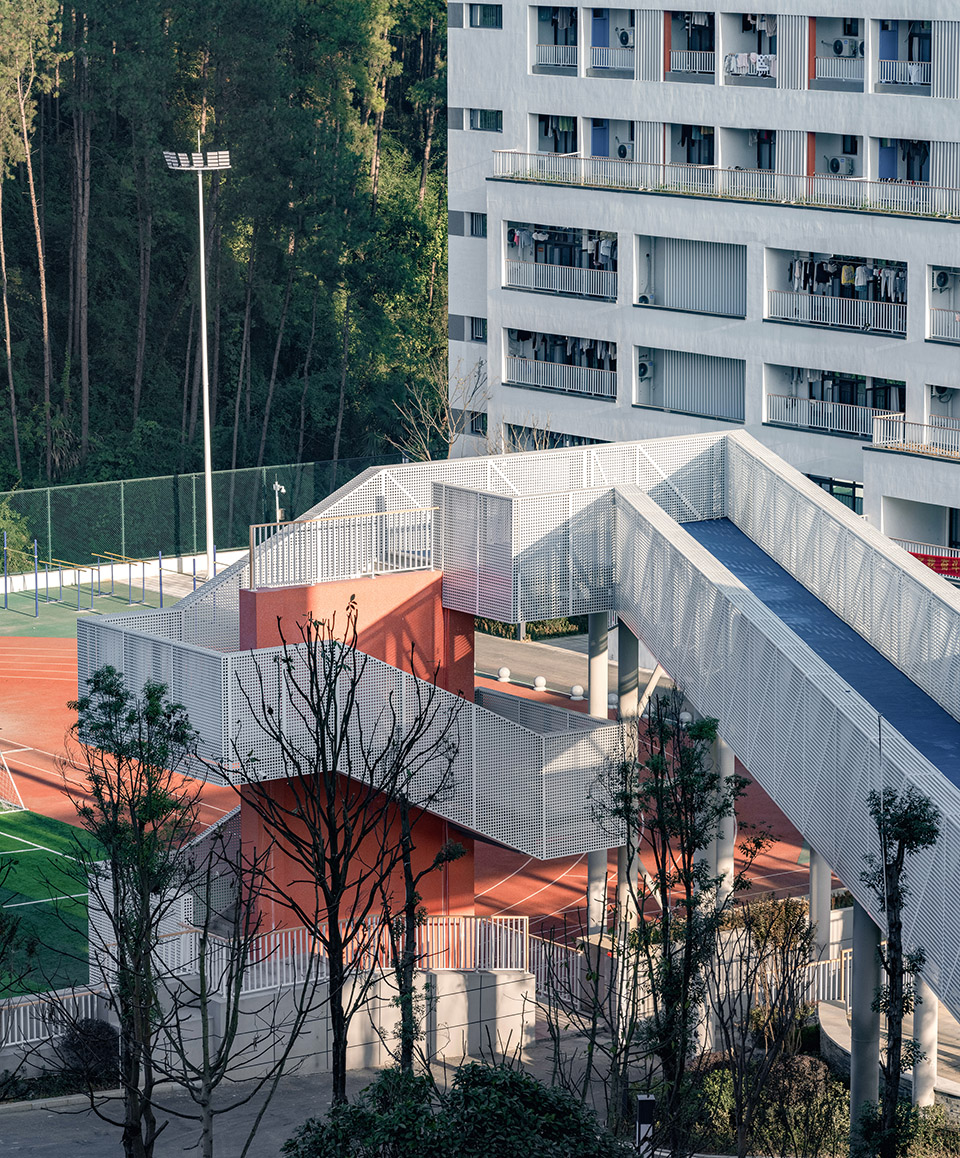
▼开敞楼梯间,Open stairwell ©崔旭峰 时差影像
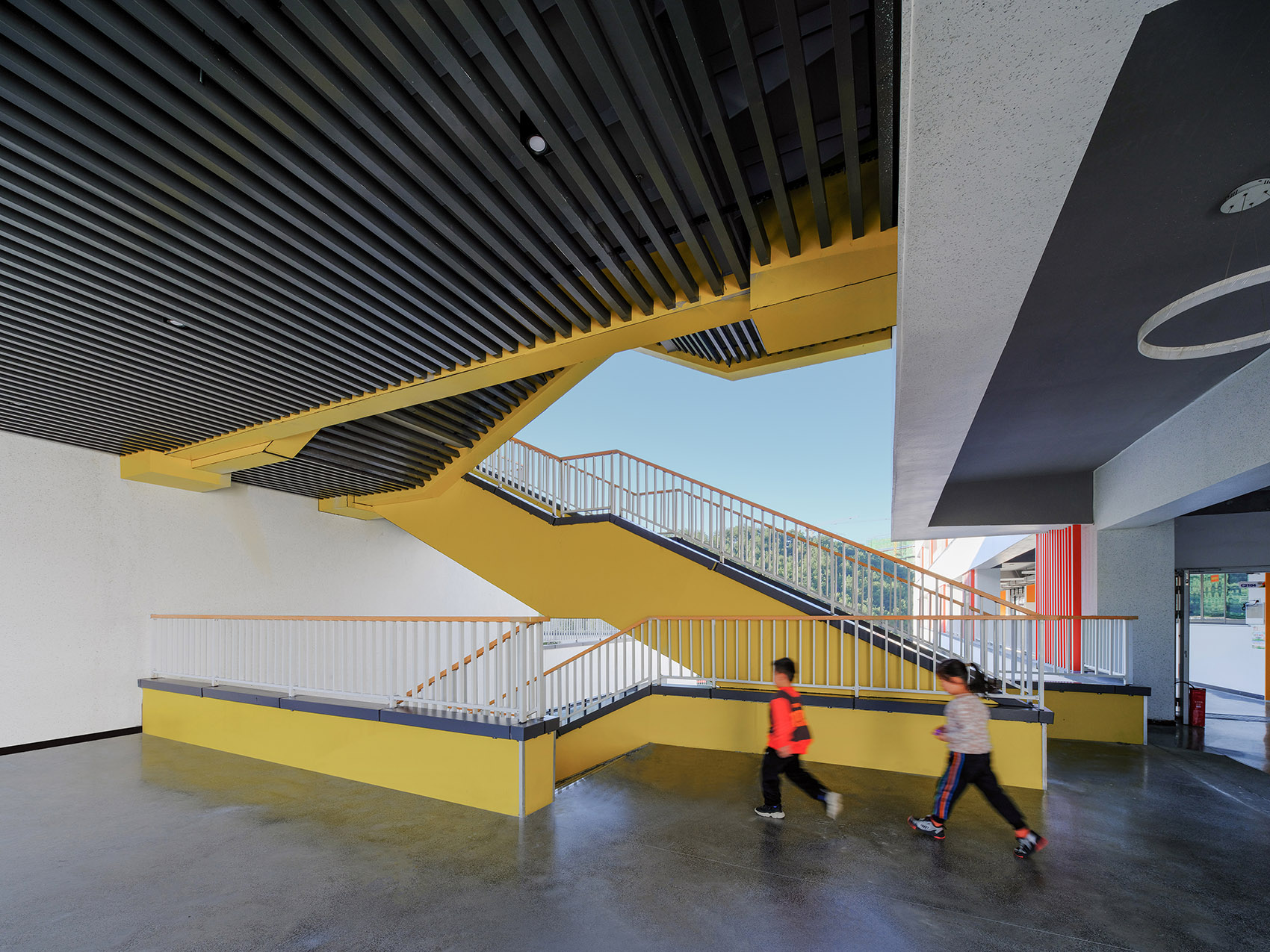
十余年处理中小学校园设计的经历中,我们始终相信环境在人性造化层面的积极意义。无论项目所处的环境基质是闹市抑或山林,是特定的使用模式抑或人文语境,总有它与众不同的特征。差异只在于有些就安安静静放在面前,等着设计者去雕琢,有些却隐匿于众生之间,需要苦思求索。
During more than ten years of campus design career, we have always believed in the positive significance of the environment in human nature enlightening. Whether downtown or nature, a specific usage pattern or a humanistic context, it always has its distinctive characteristics. The difference only lies in the fact that some of them are quietly placed in front of the designer, waiting to be sculpted, while others are hidden among the living beings and need to be painstakingly explored.
▼幼儿园,Kindergarten ©崔旭峰 时差影像
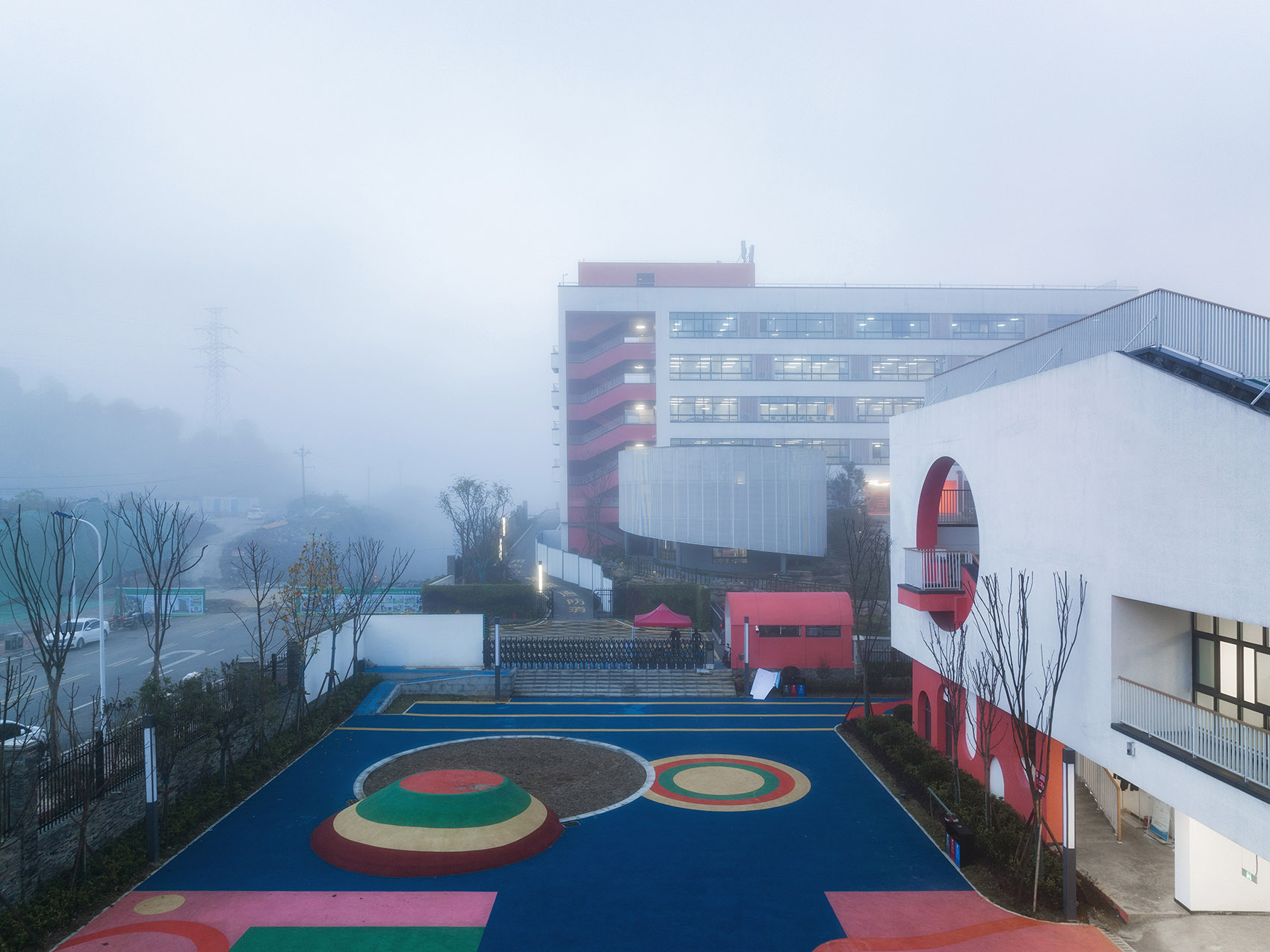
▼校园文化陈列室,Campus Culture Showroom ©崔旭峰 时差影像

▼模型,Models ©象外营造工作室
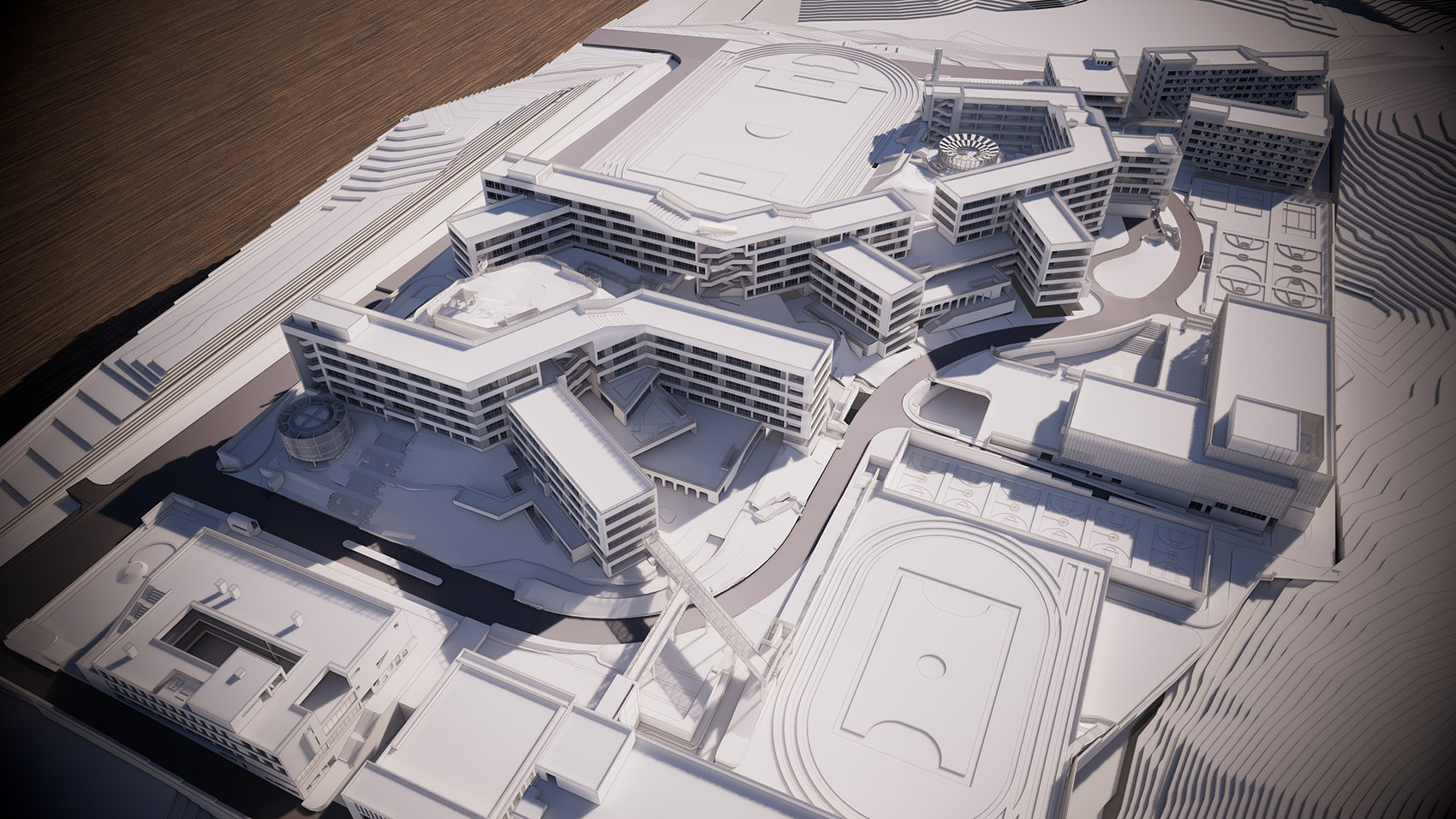
▼总平面图,Master Plan ©象外营造工作室
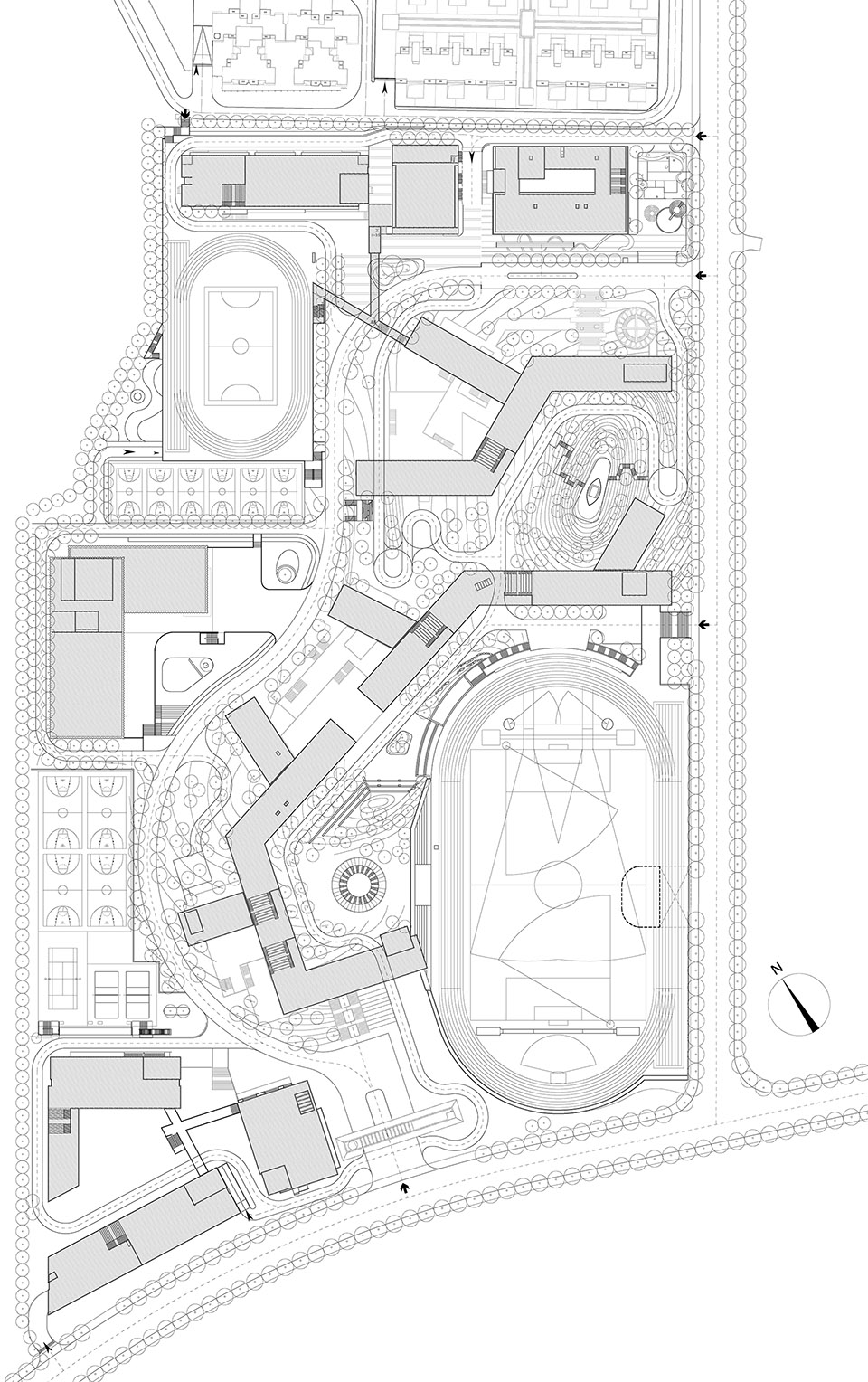
▼下叠一层平面图,Plan -1F ©象外营造工作室
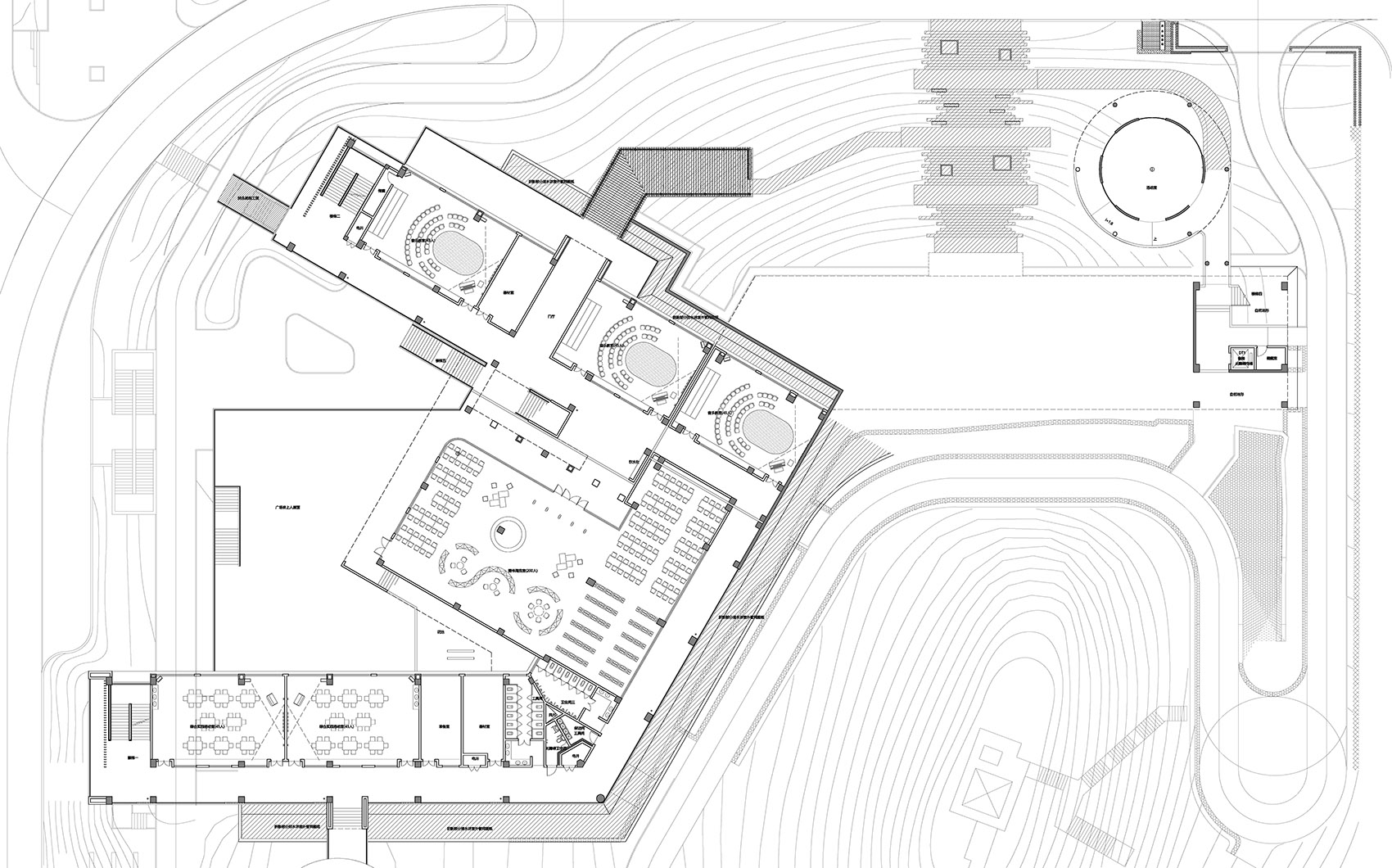
▼主入口标高层平面图,Plan 1F ©象外营造工作室
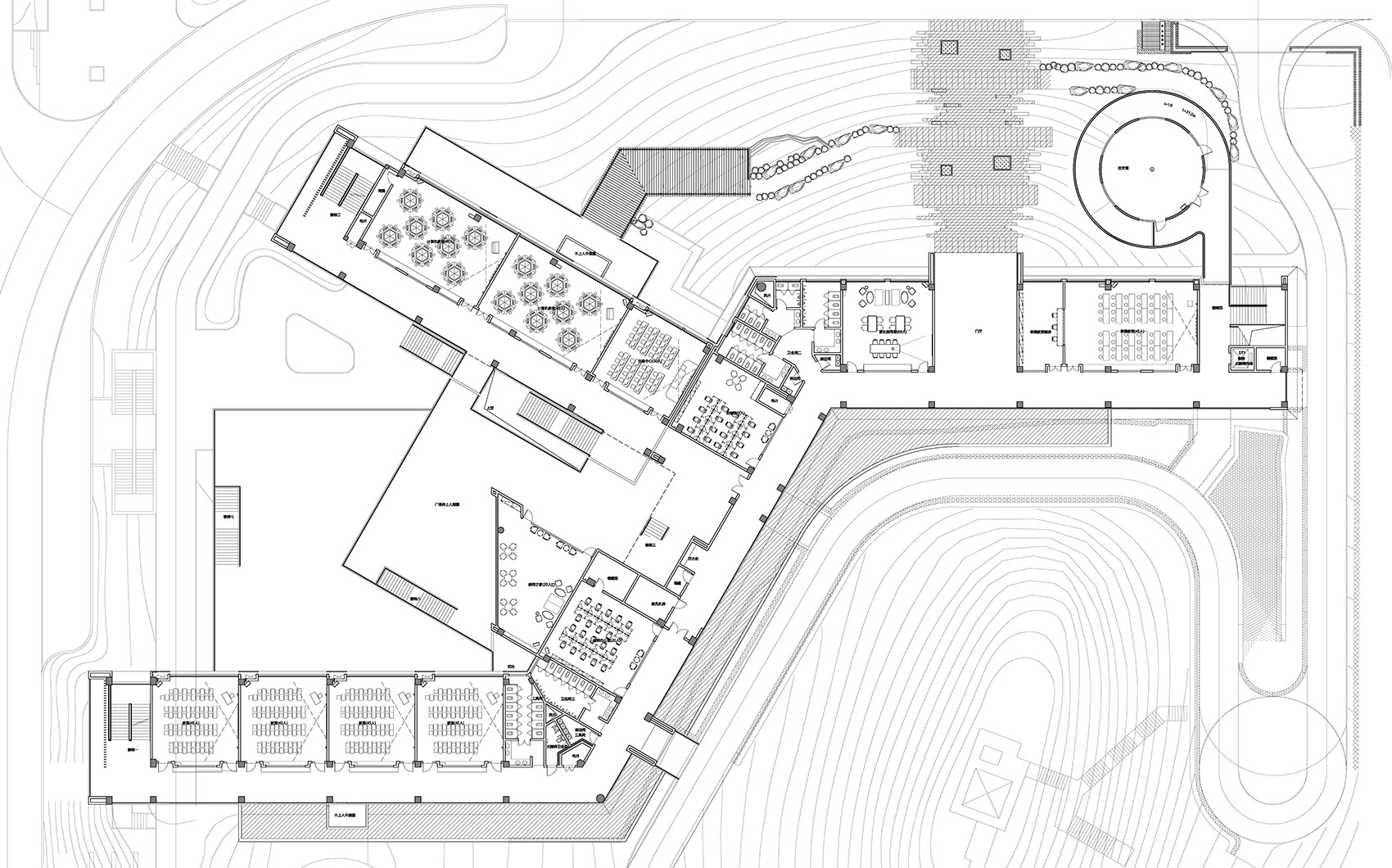
▼二层平面图,Plan 2F ©象外营造工作室
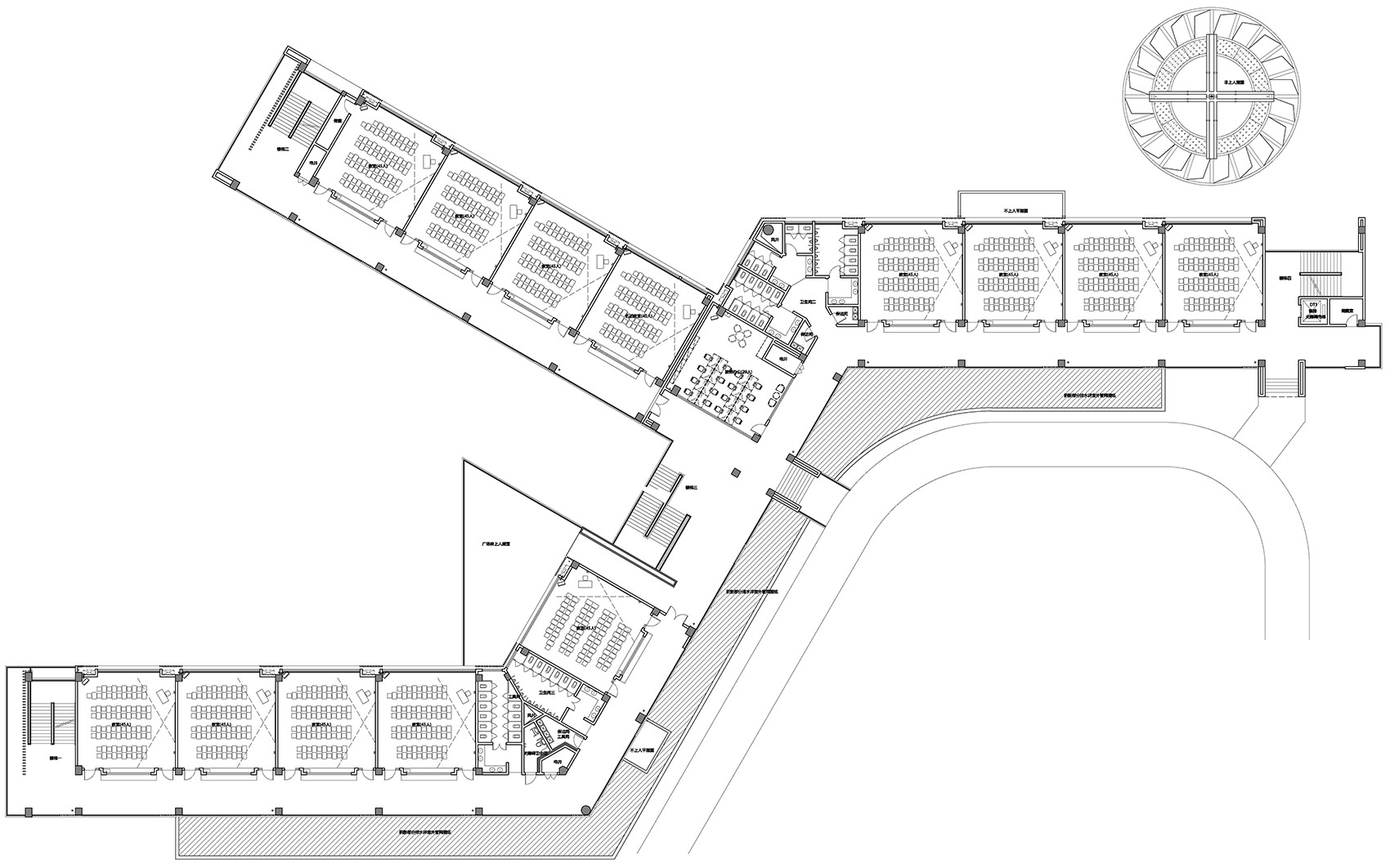
项目名称:吉首中驰·湘郡礼德学校 业主:吉首中驰教育咨询管理有限公司 地址:湘西自治州吉首市 设计时间:2019.12~2020.07 竣工时间(一期):2021.06 学校规模:105班K12学校 用地规模:10.07ha 建筑面积:10.71万㎡/4.45万㎡(一期) 建筑摄影:崔旭峰 时差影像
设计单位:山东建筑大学建筑城规学院象外营造工作室 主持建筑师:刘伟波 项目建筑师:(一期)张增武、于文原、(二期)焦尔桐、张洪川 建筑方案团队:王洪强、许兆淏、袁龙玉、吴新超、马筠茹、司道强、赵亮(实习)、吕一玲(实习)、王书琪(实习)、王帅(实习)、王家熹(实习)、李成成(实习)
施工图设计: 建筑:刘思同、李心慧、陈奎胜、杨秀金、周厚鹏、王磊 结构:魏鹏、邵长浩、王美杰、范修垒、杨通、陈维军、邓欣宜 设备:郭光瑞、王彦松、刘洪奎、吴莹、戴立胜、周绍辉 电气:韩琦、滕飞、胡庆元、蒋天良、张凤飞、毕敬钰 景观设计:丁国勋、范鲁燕、袁燕、刘耀宗、吕习习、温杰、孟香雨 室内设计:王依群、张鲁、秦飞飞、史德抗、燕金璇、徐君丽
▼项目更多图片


